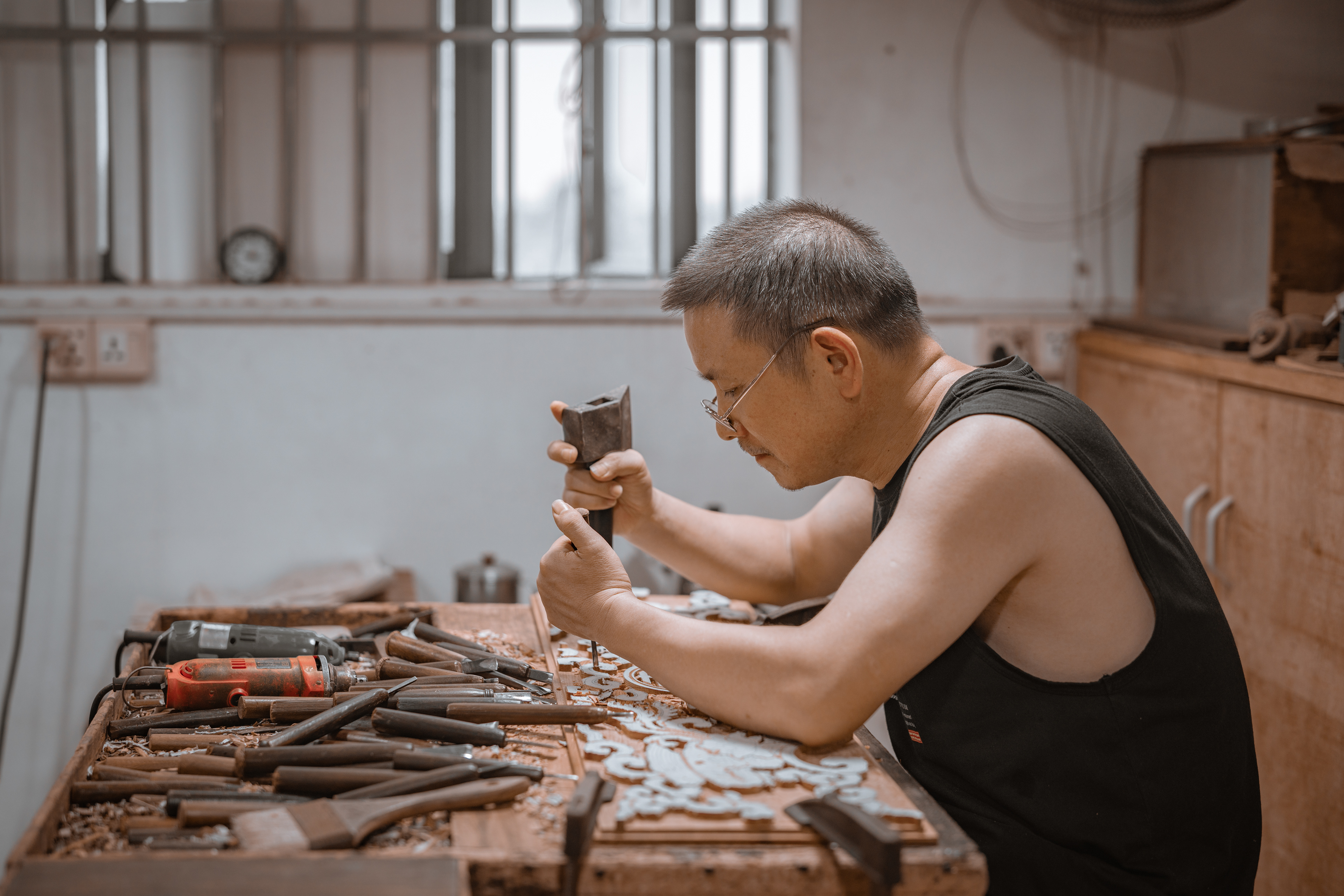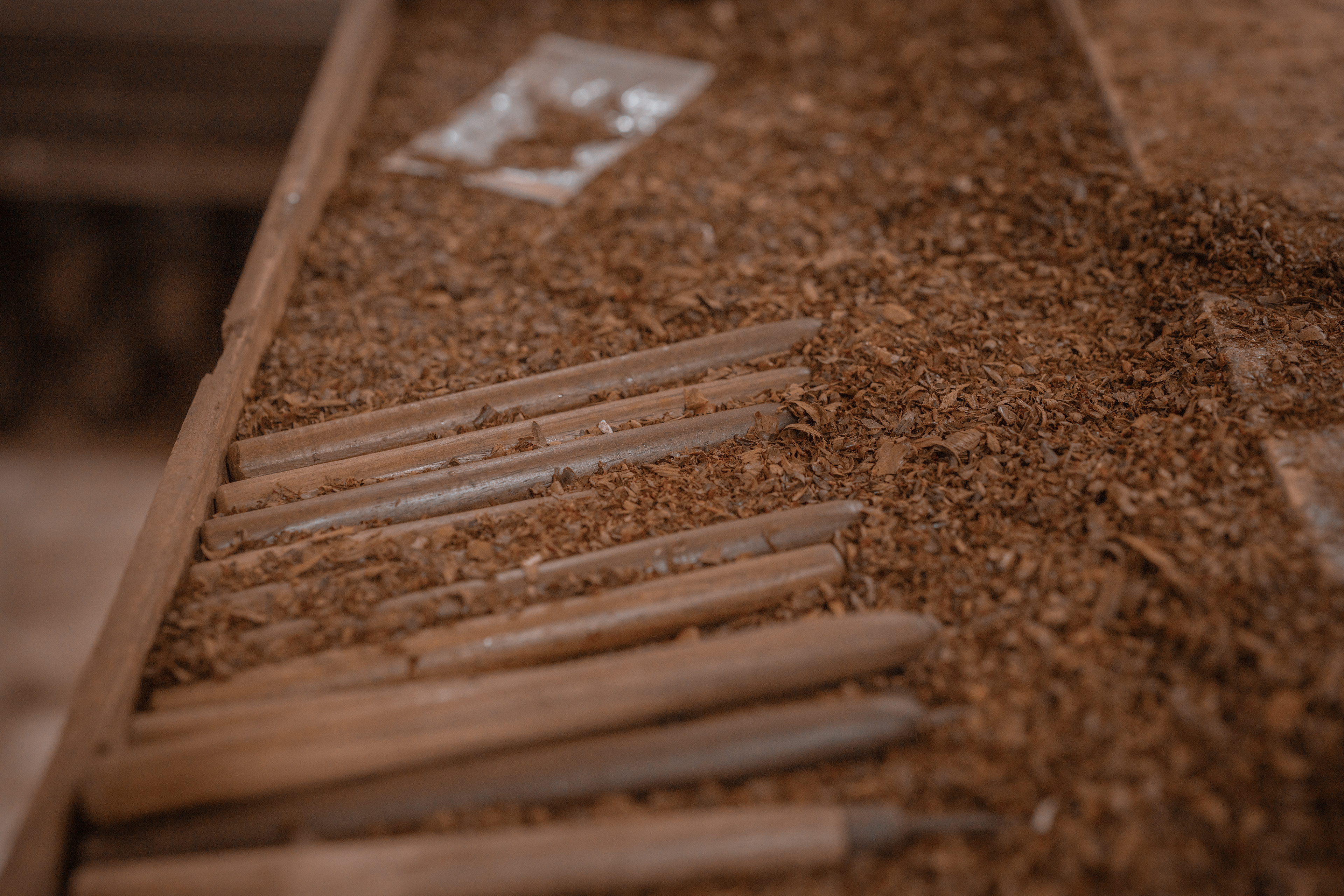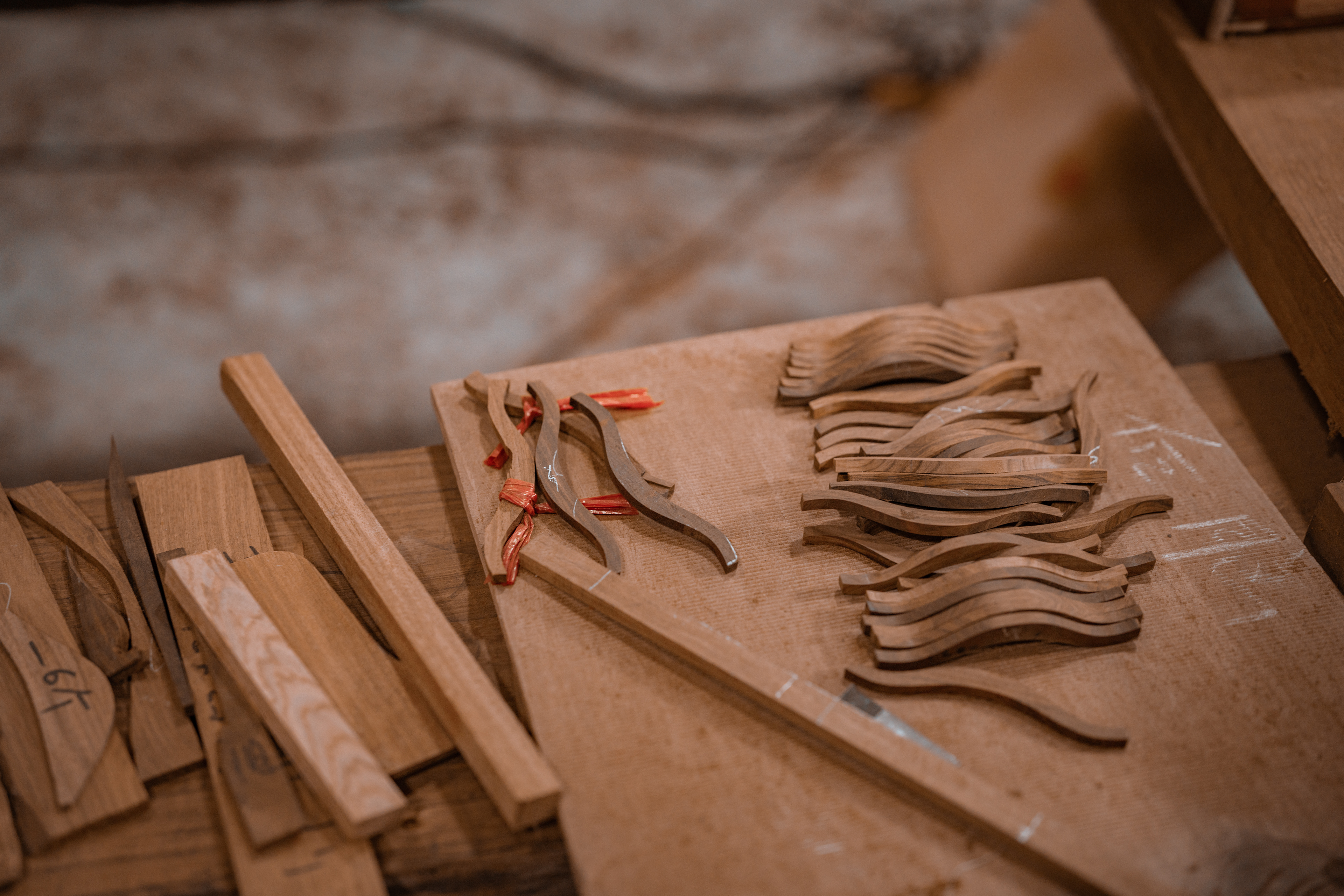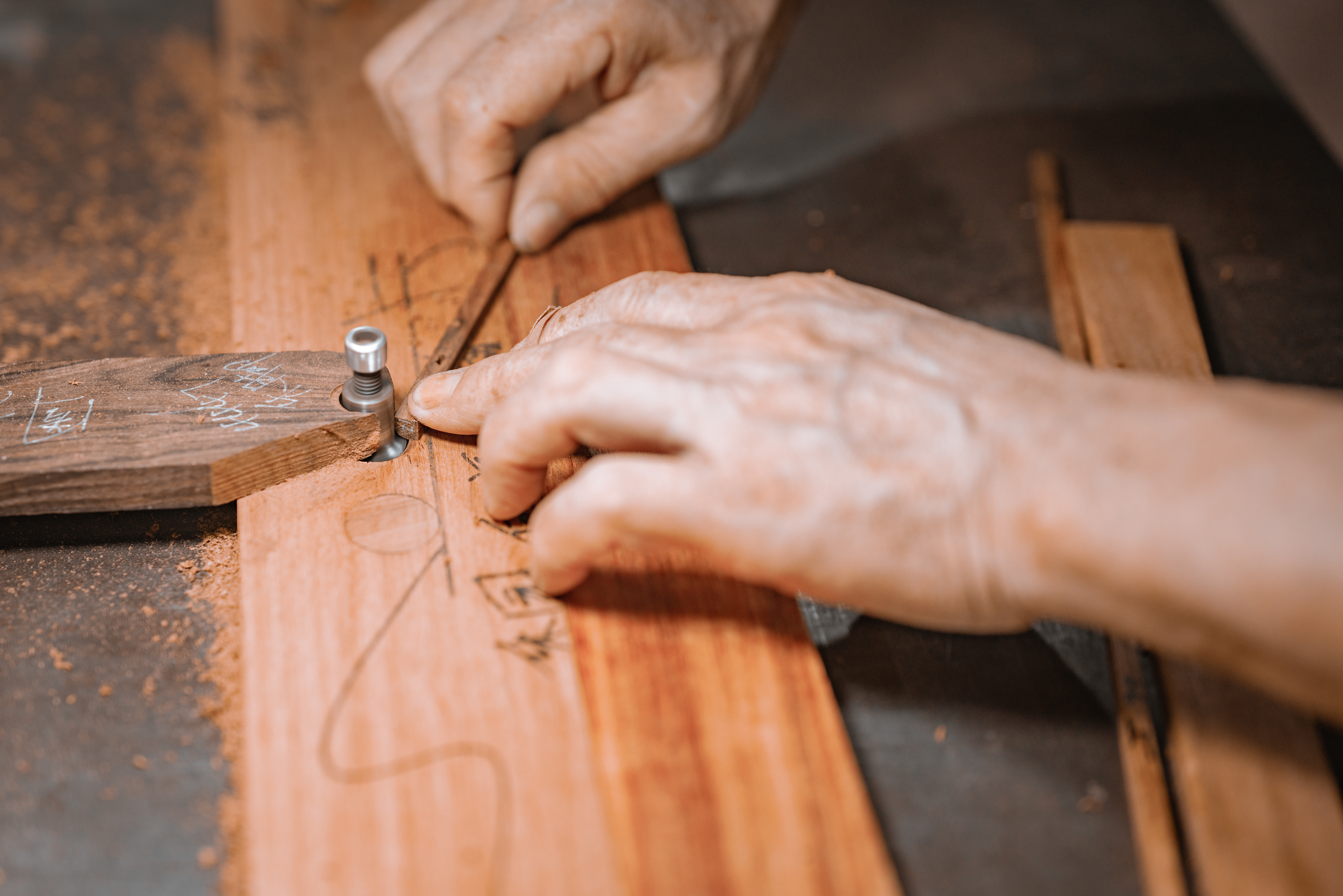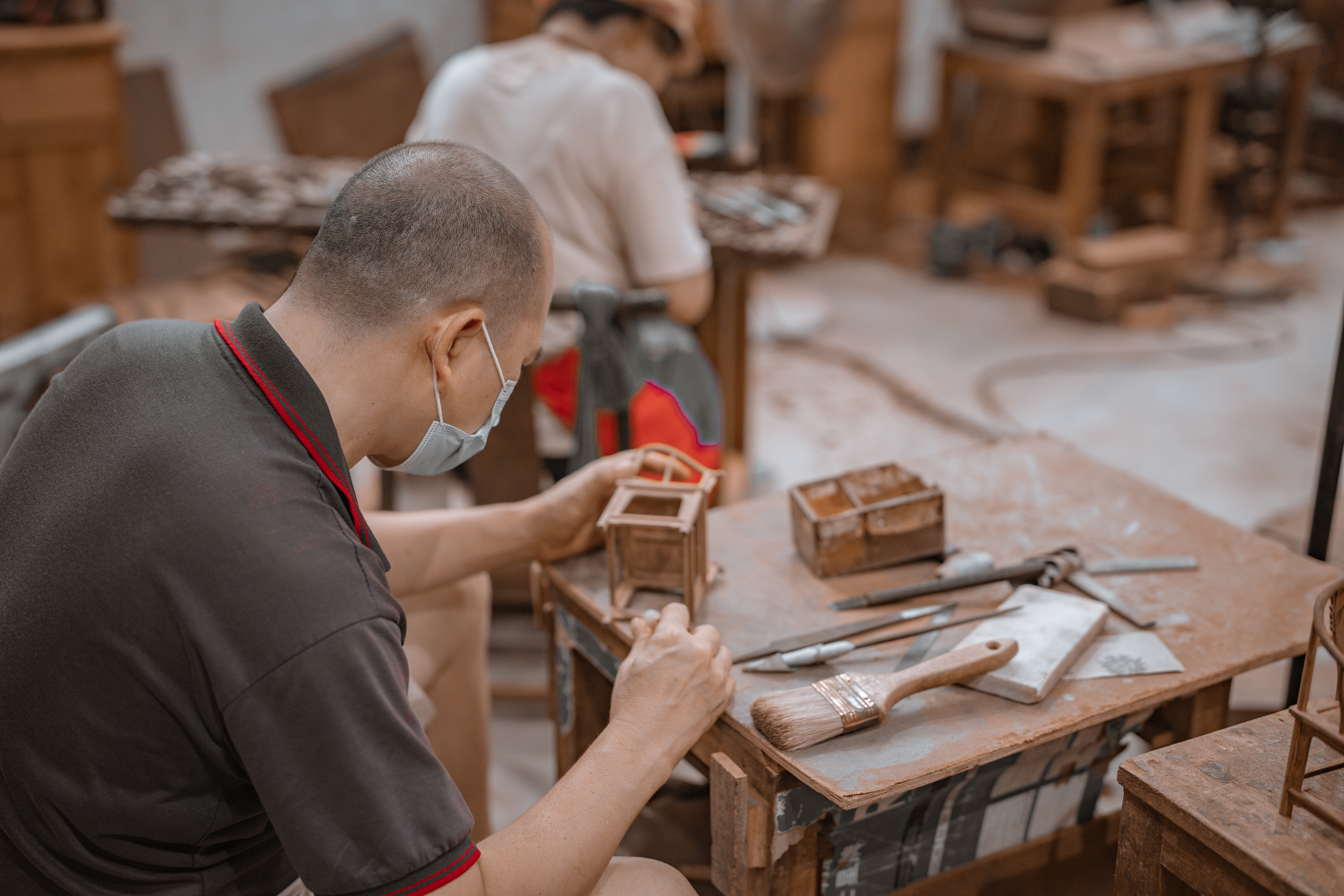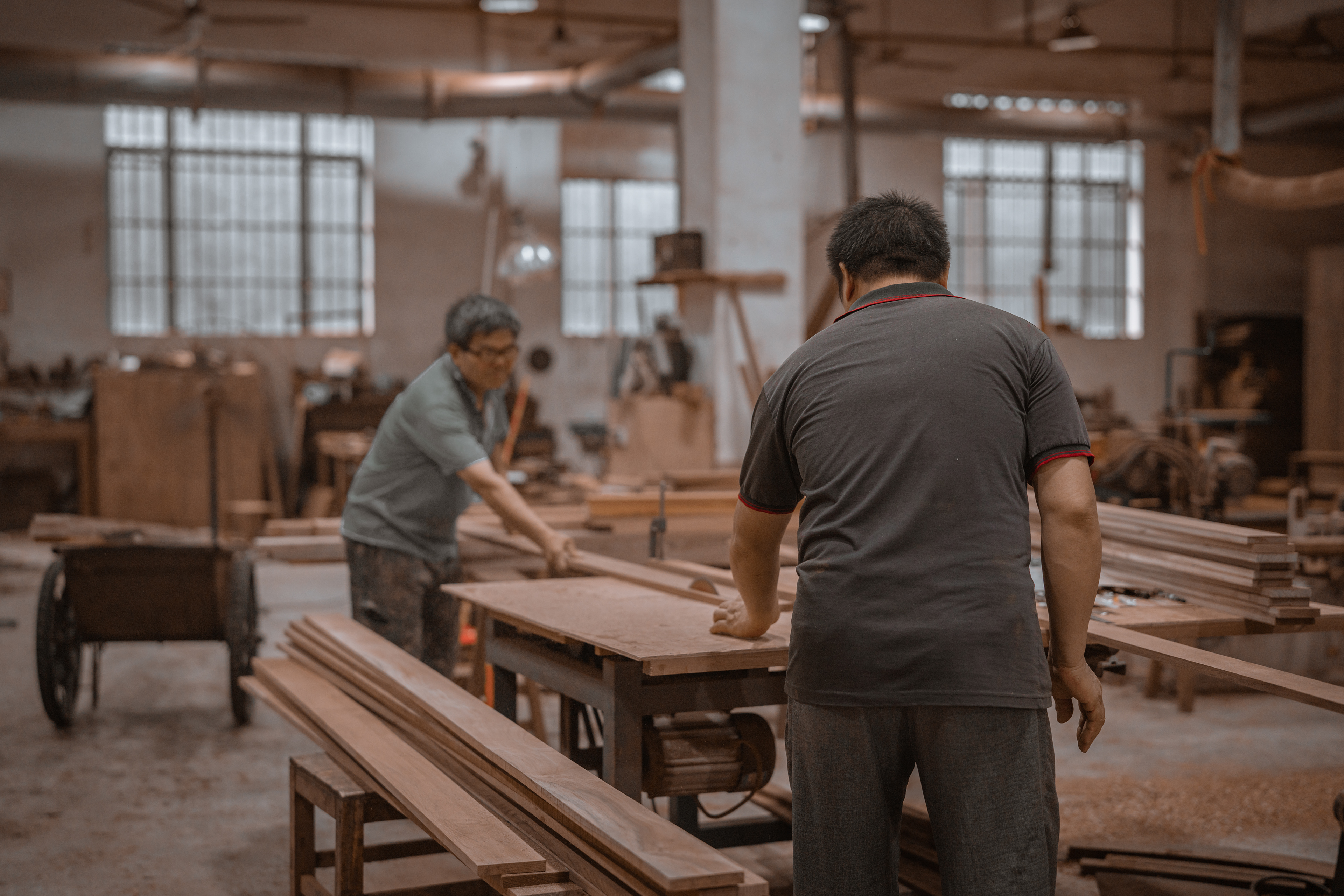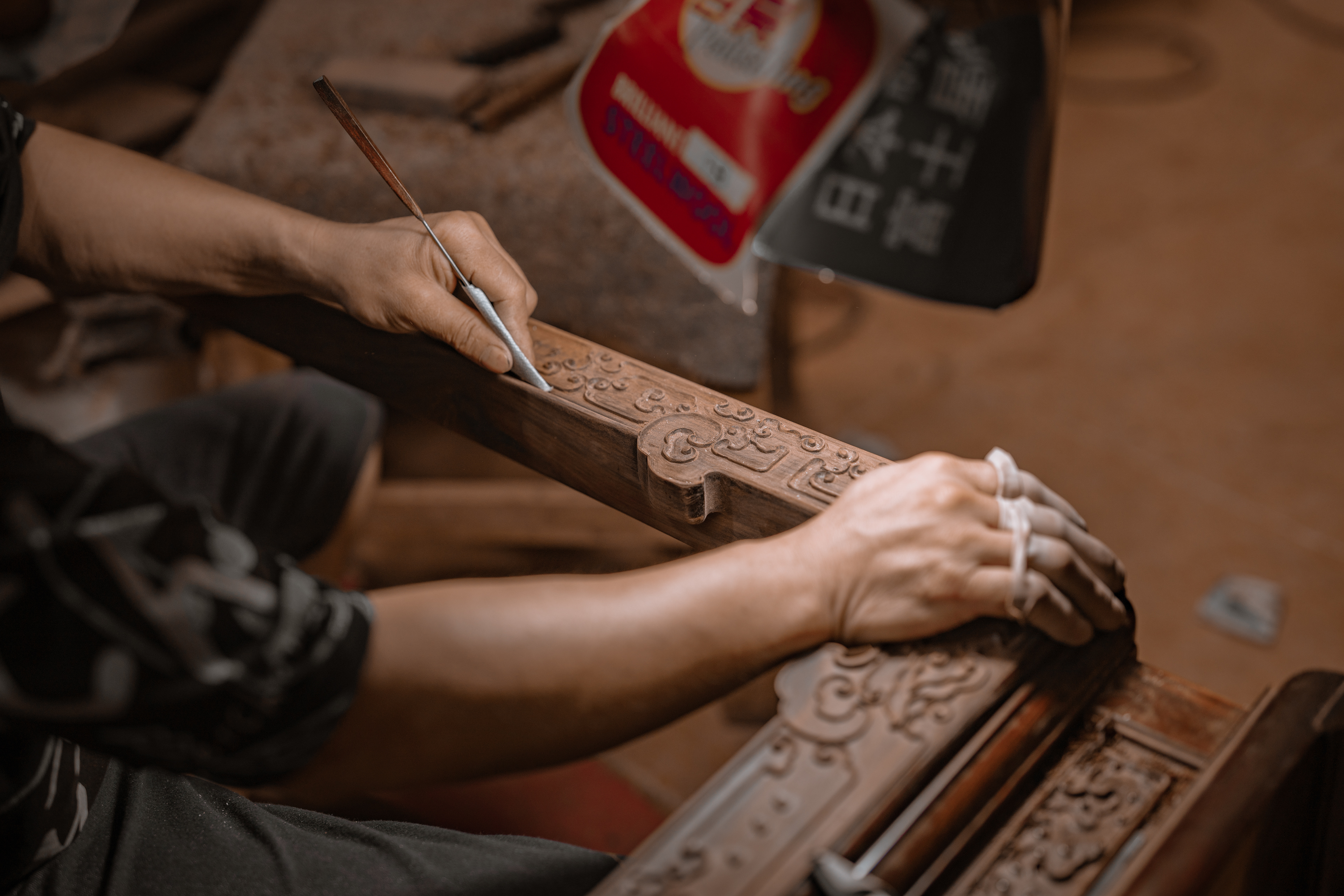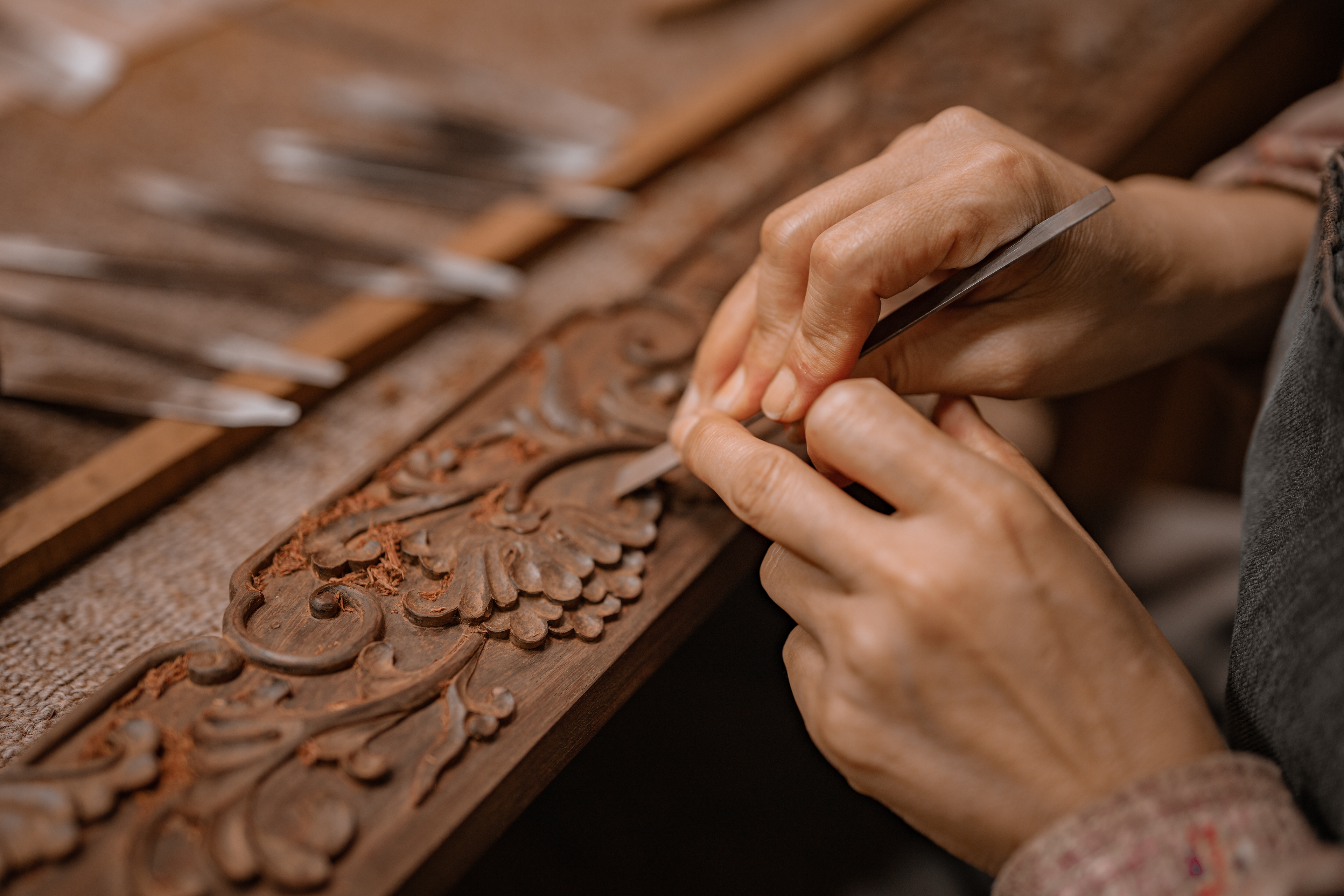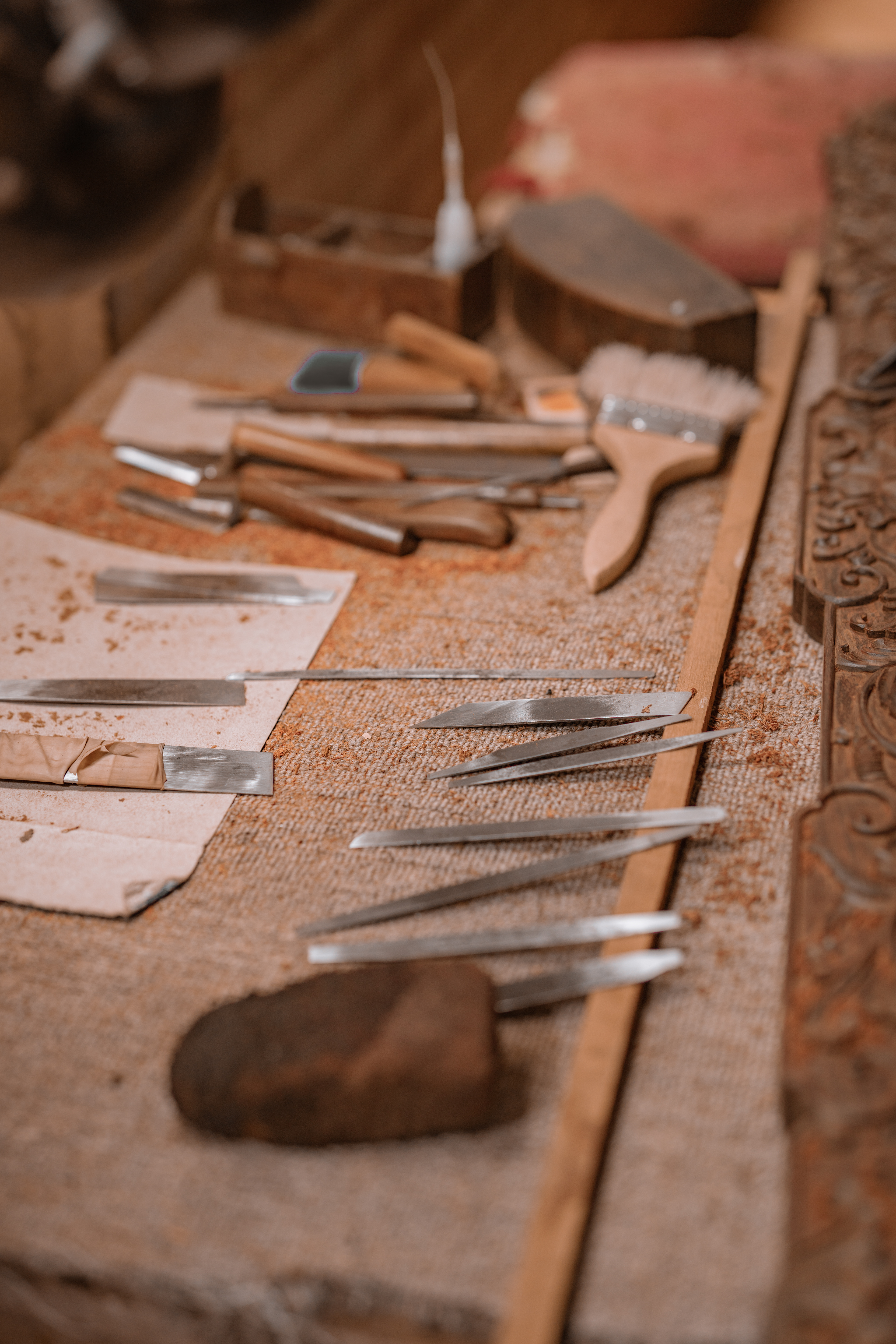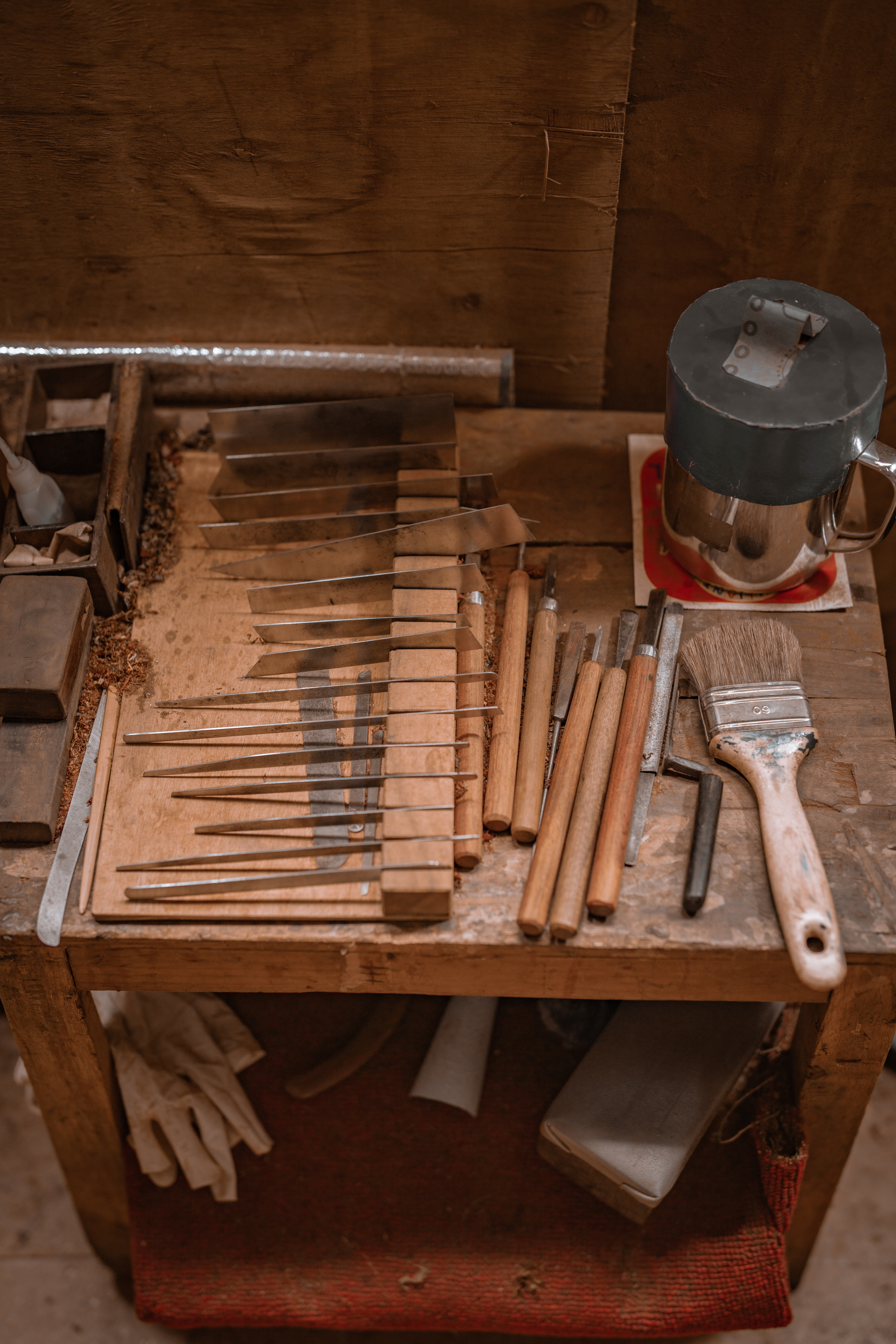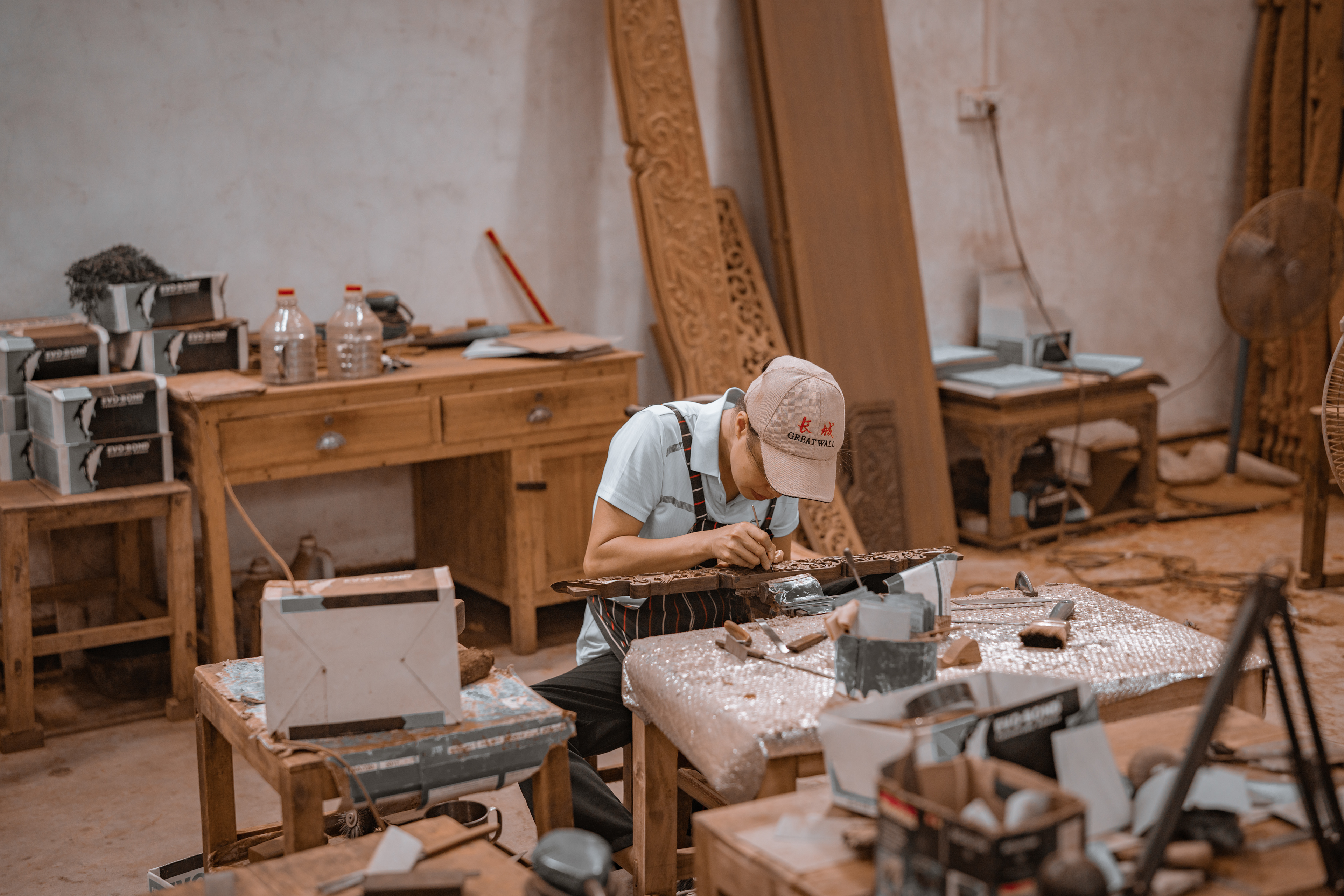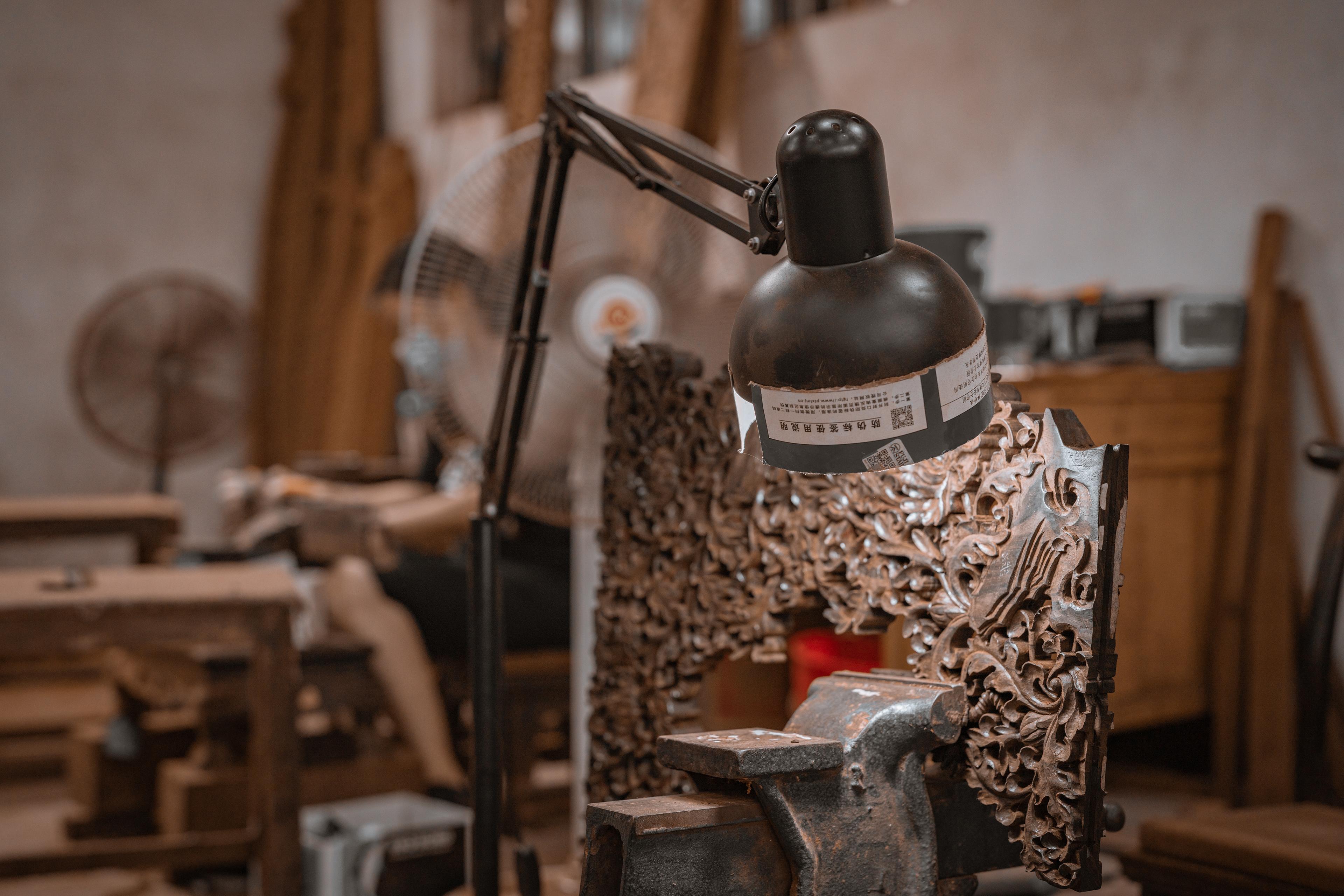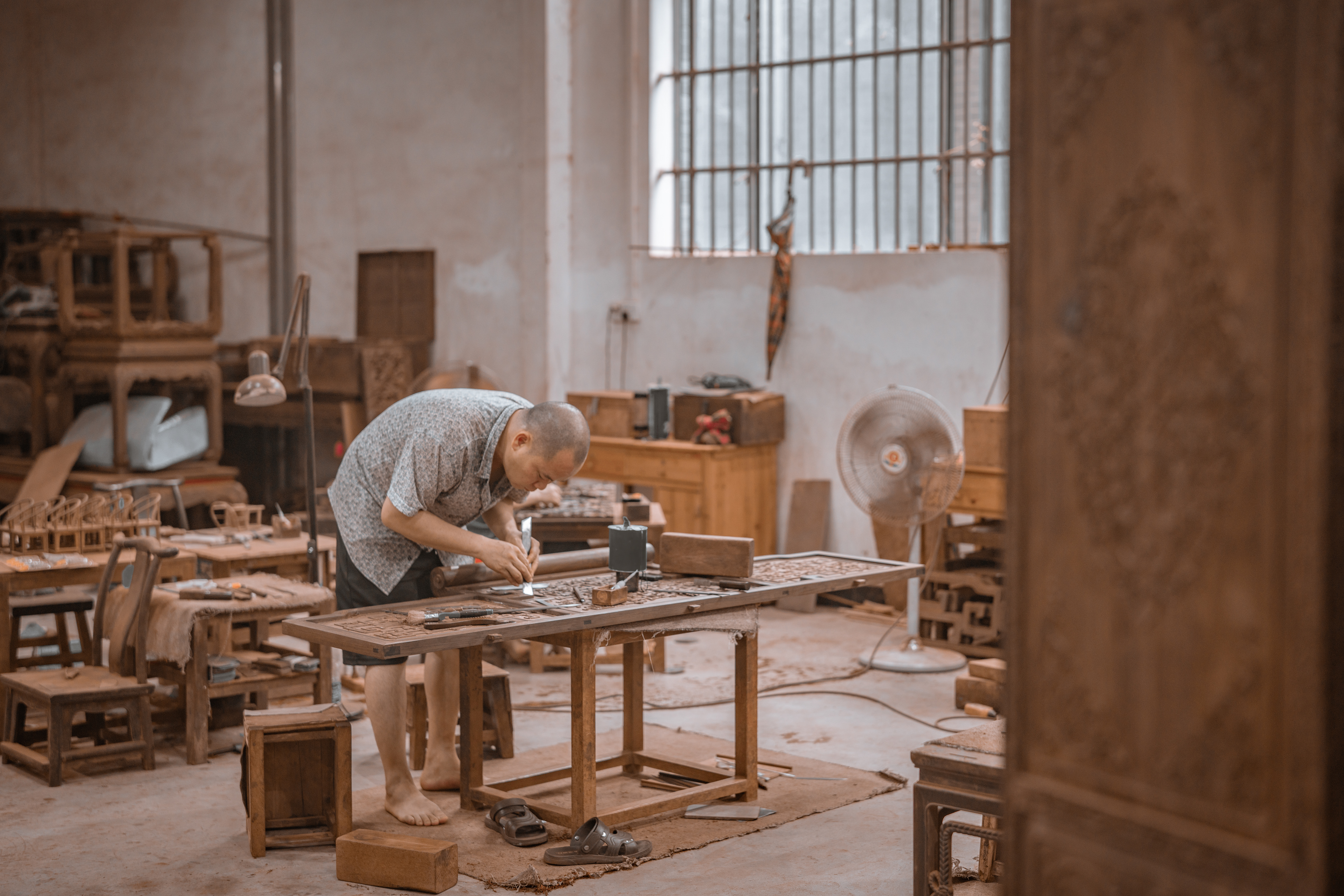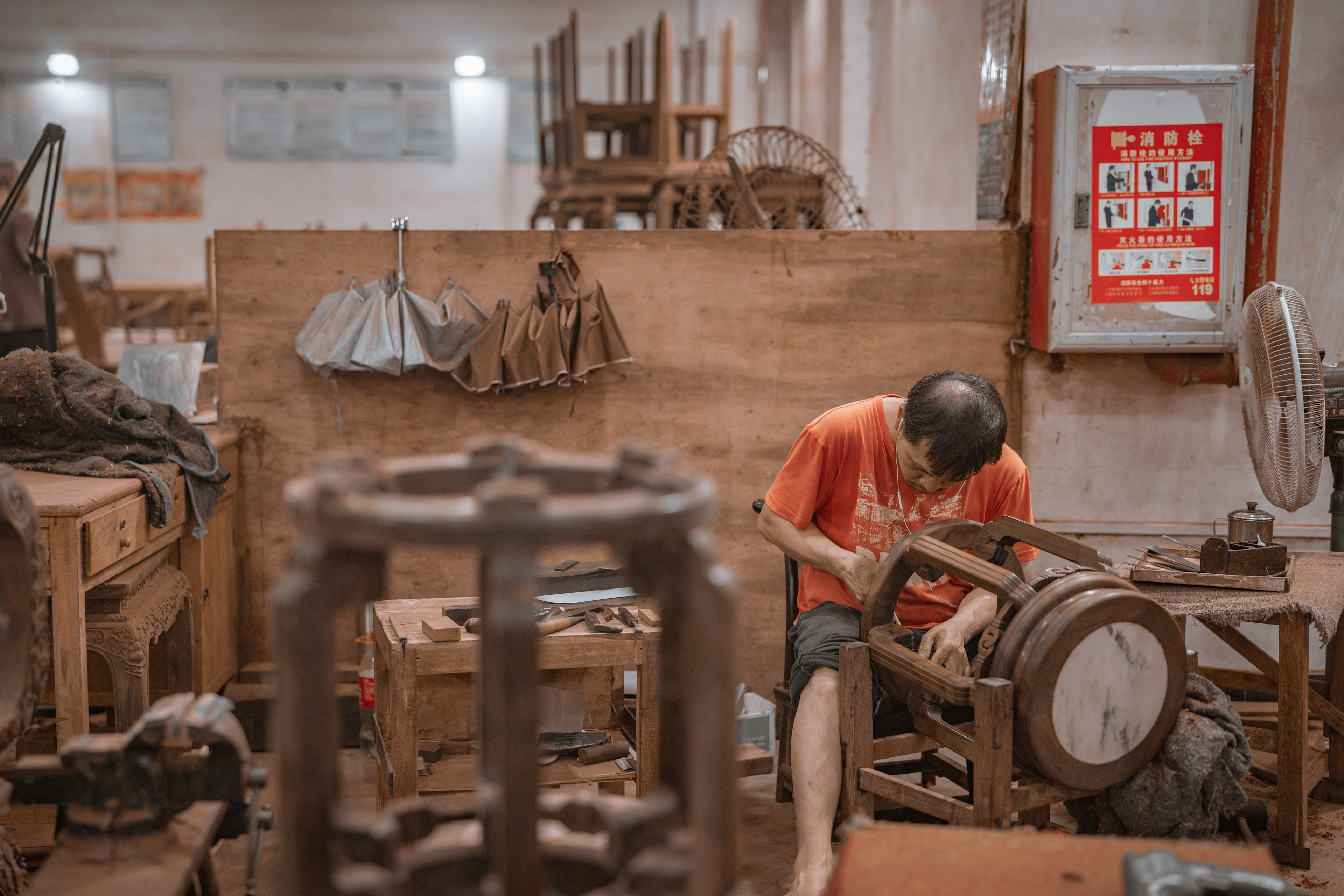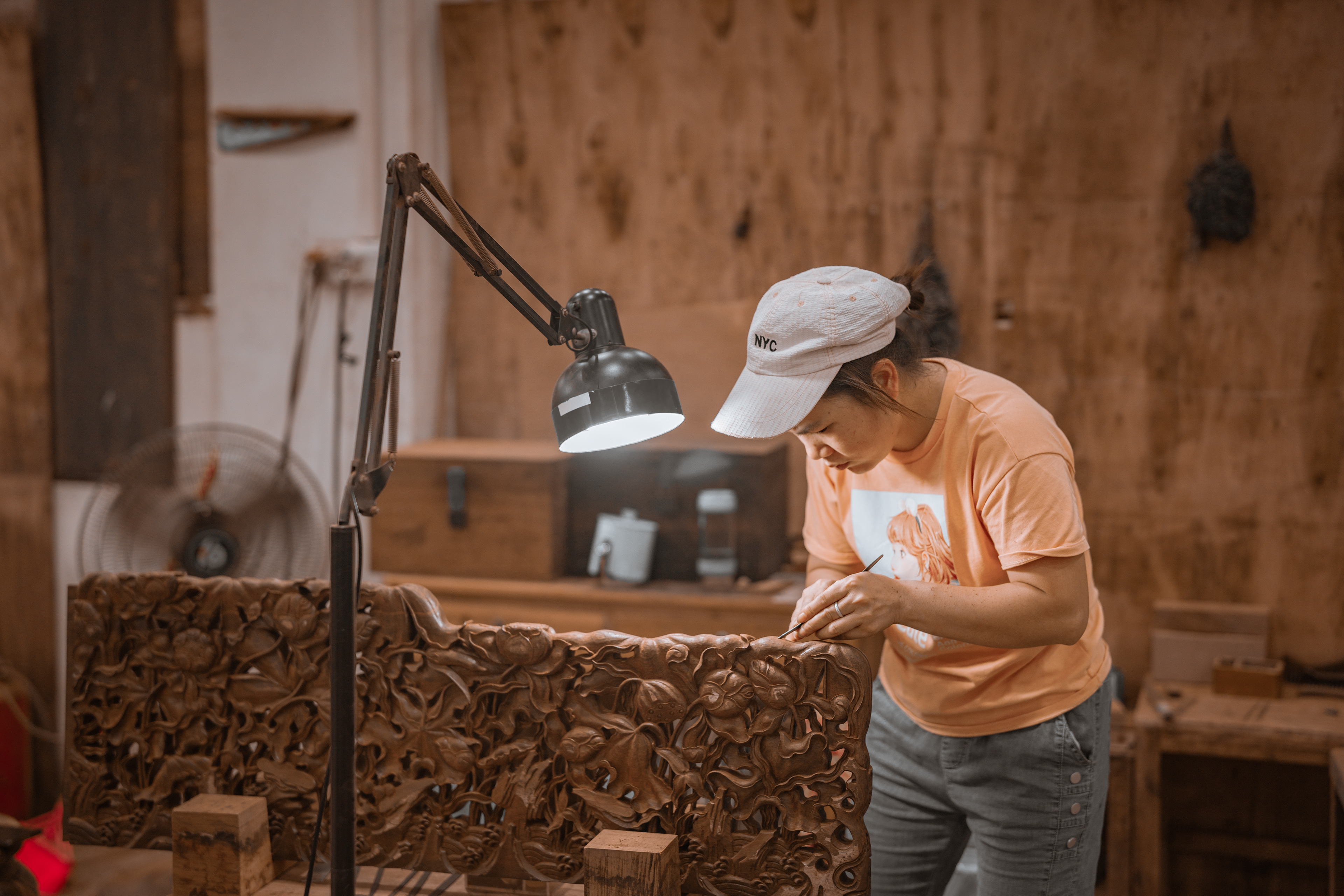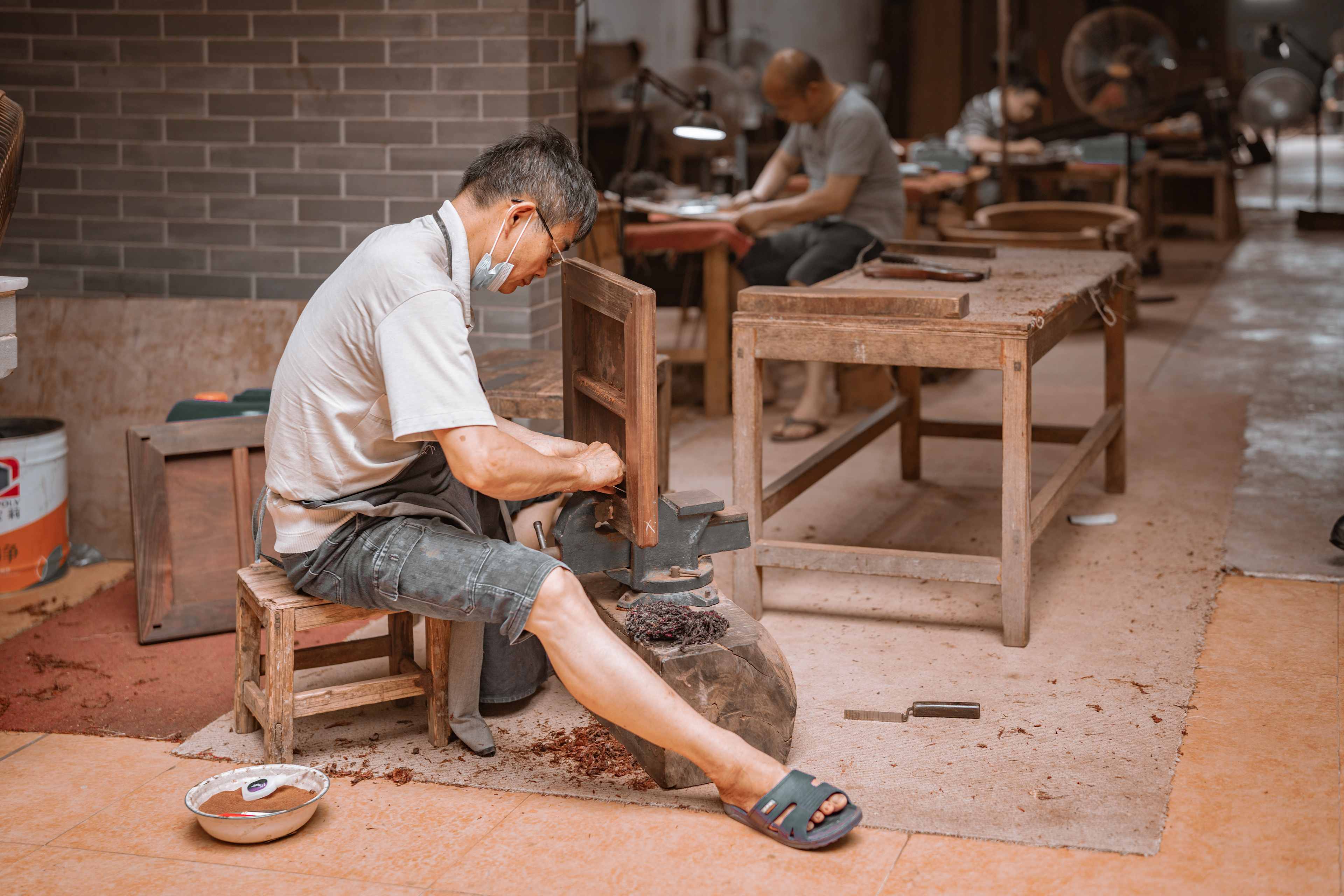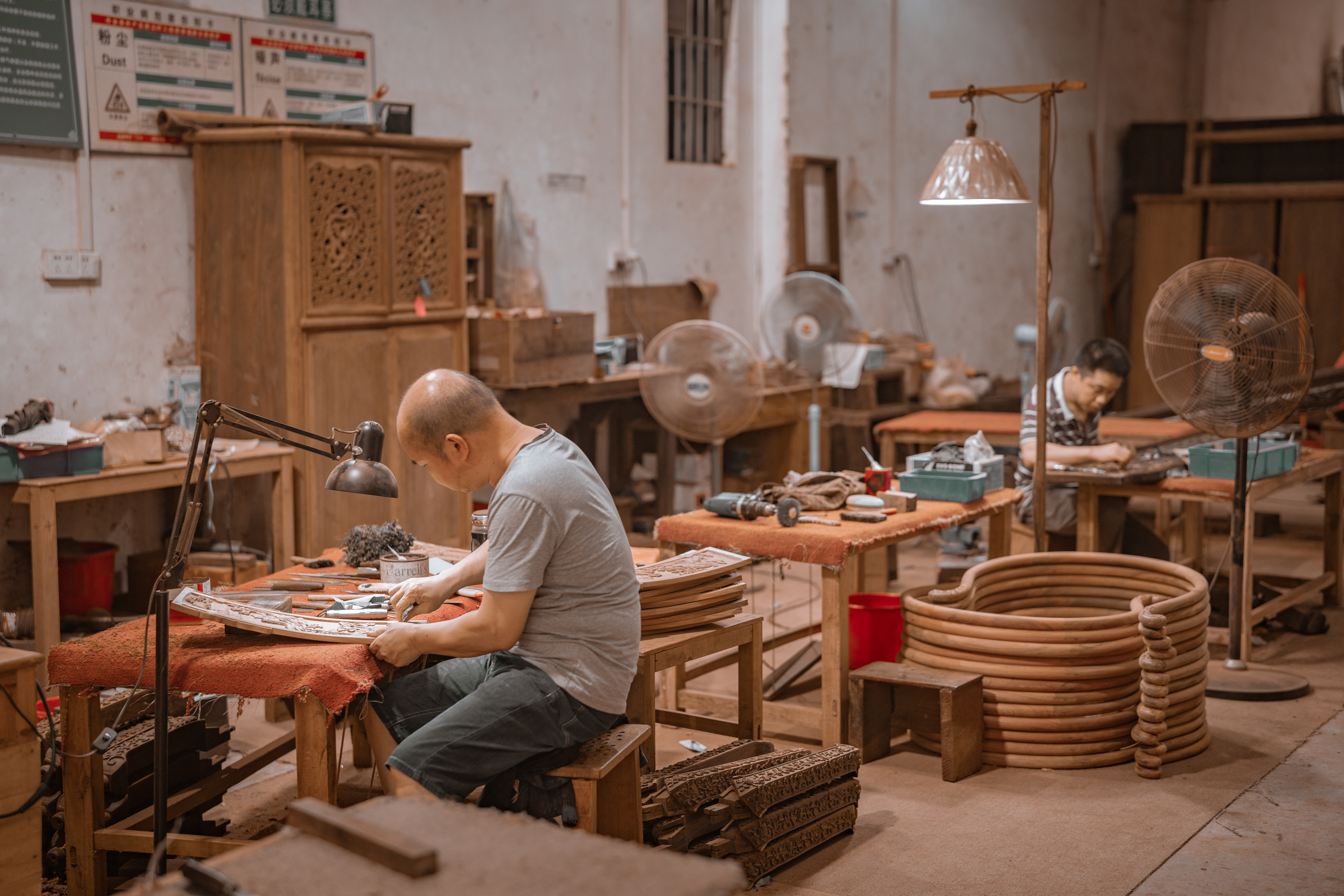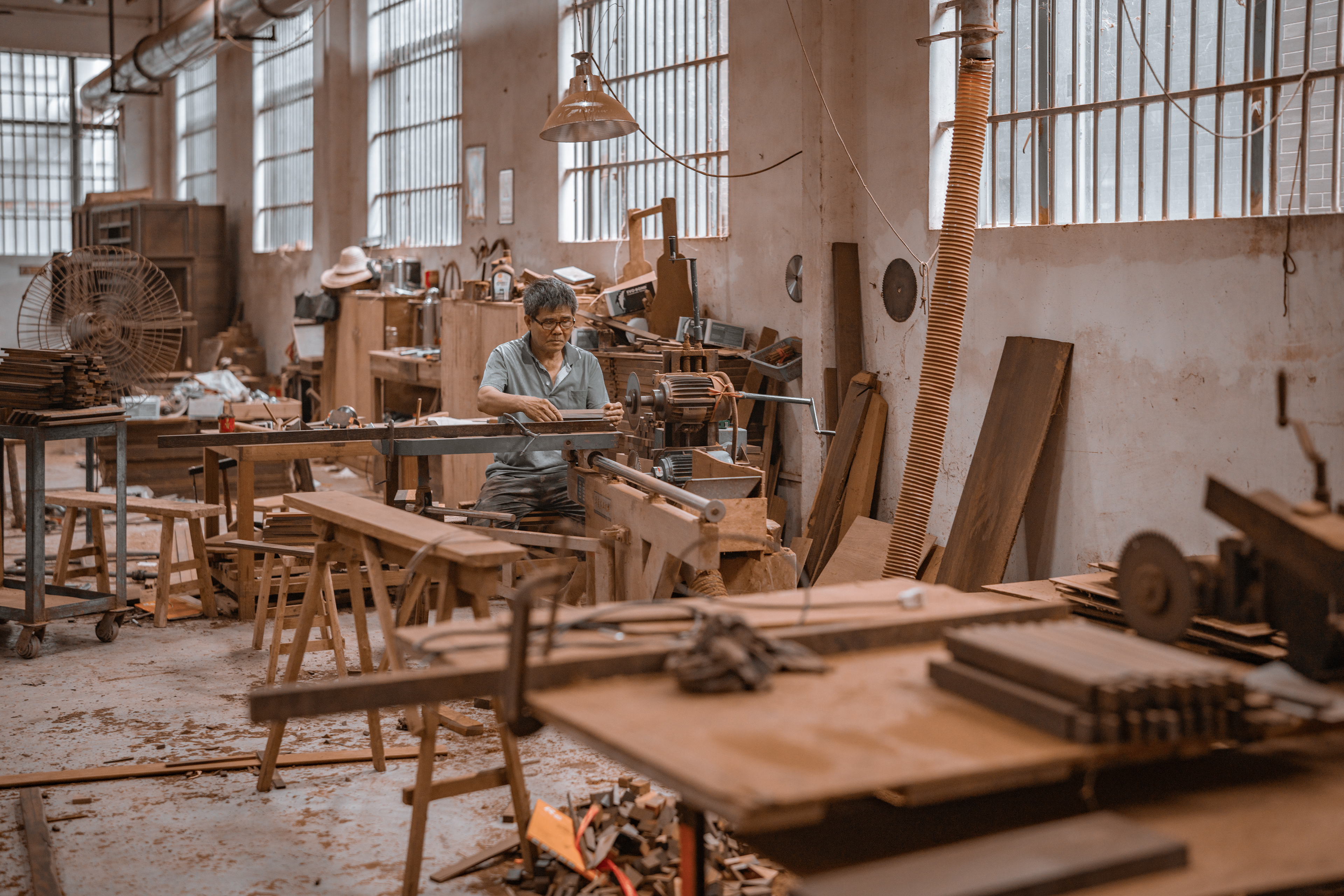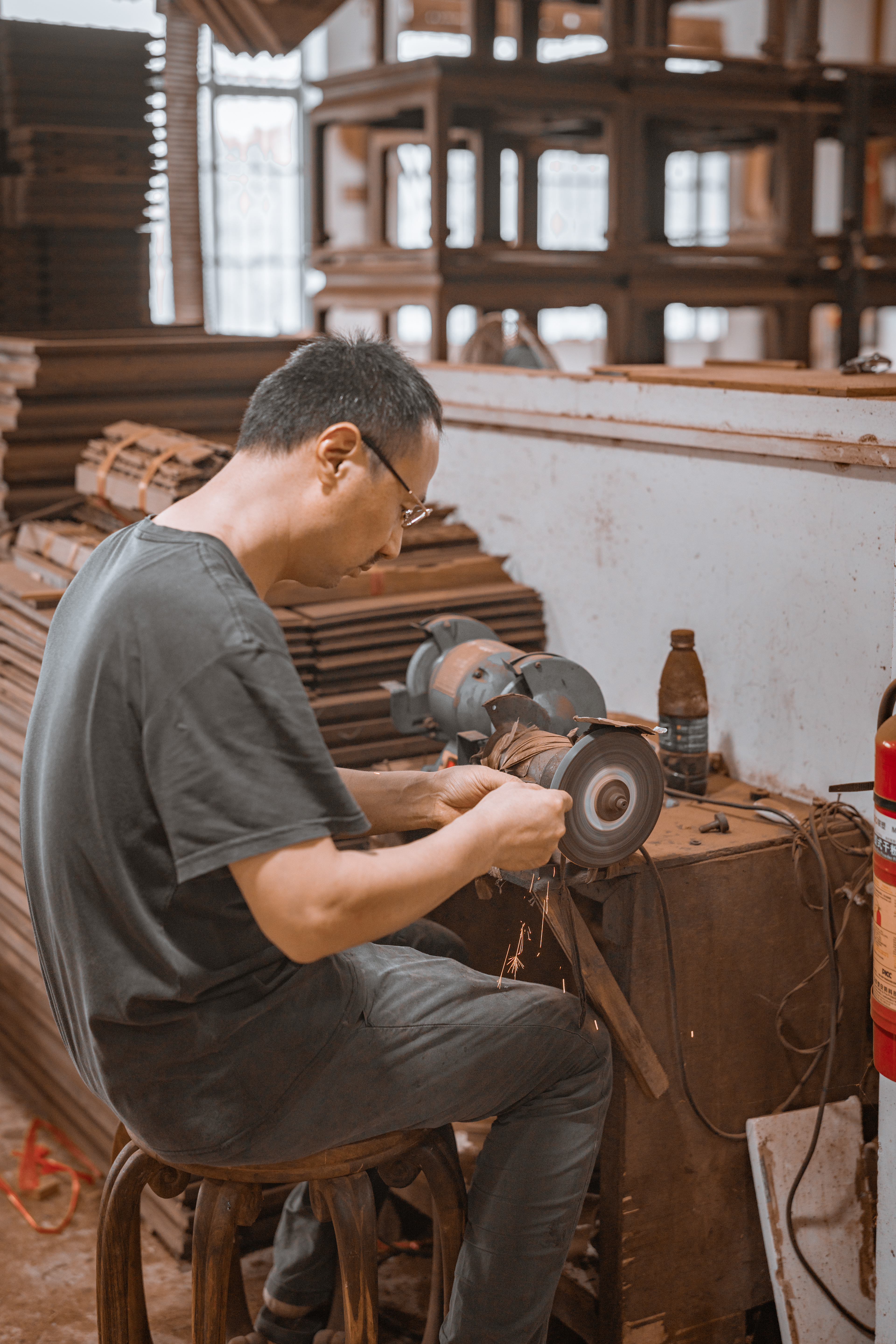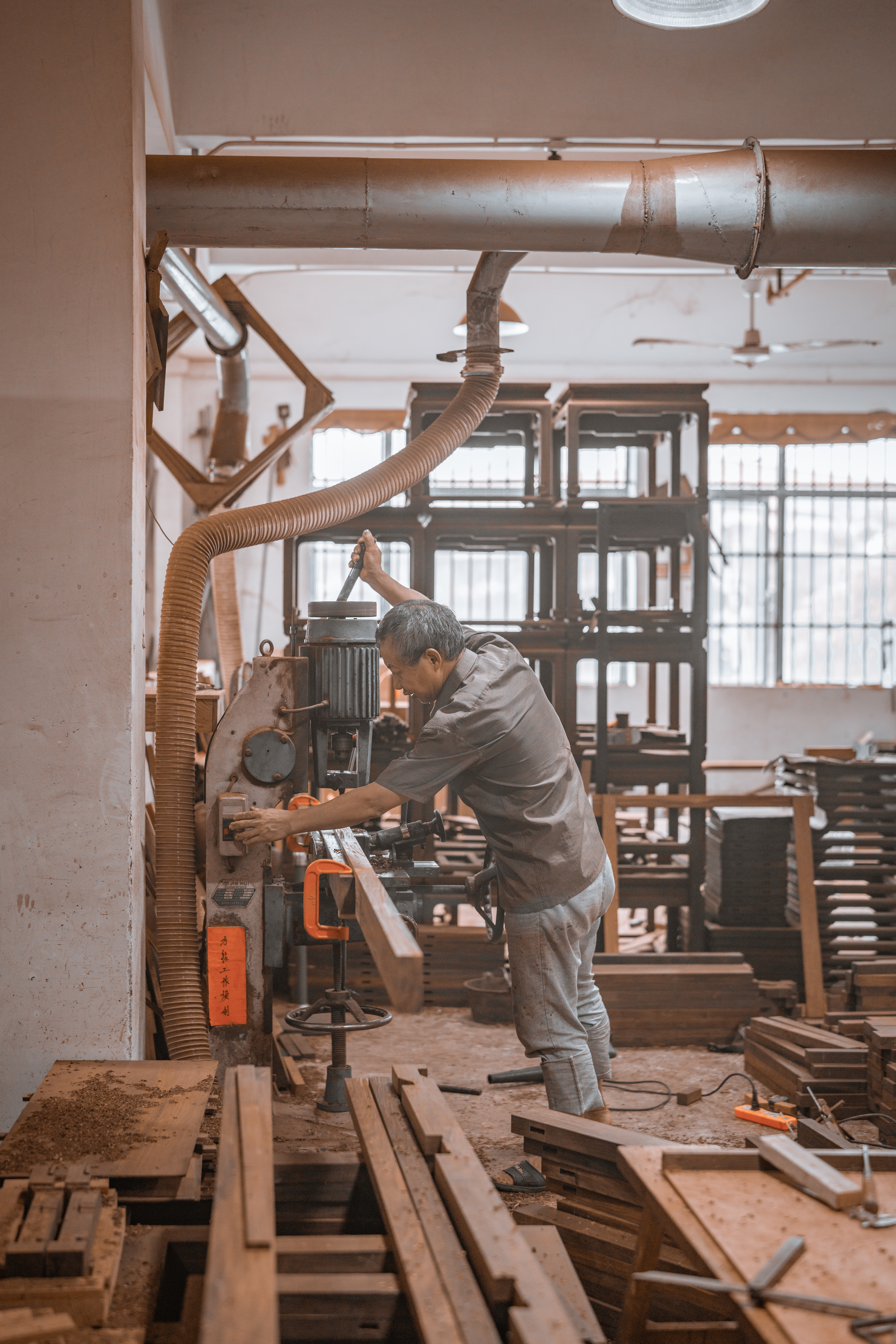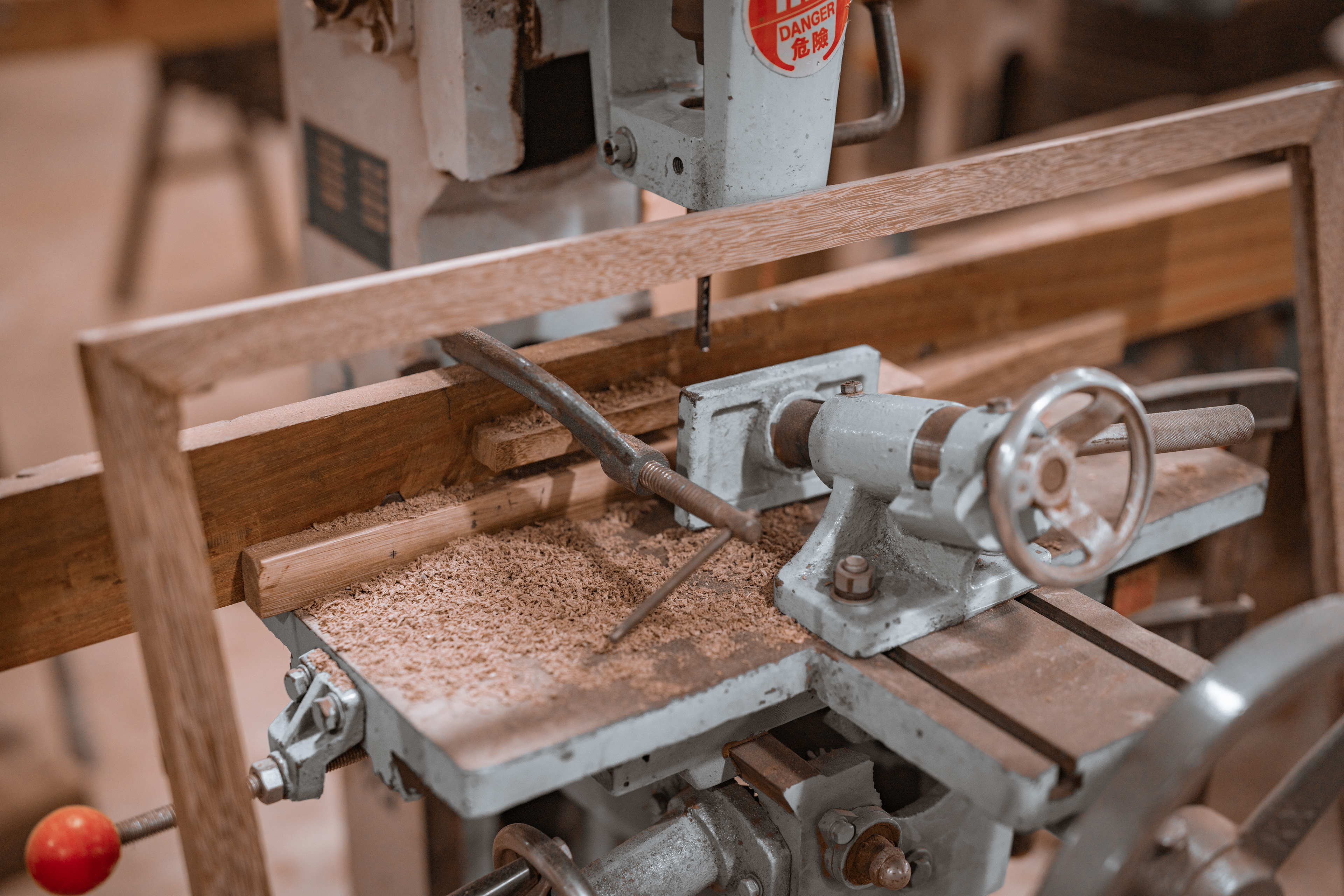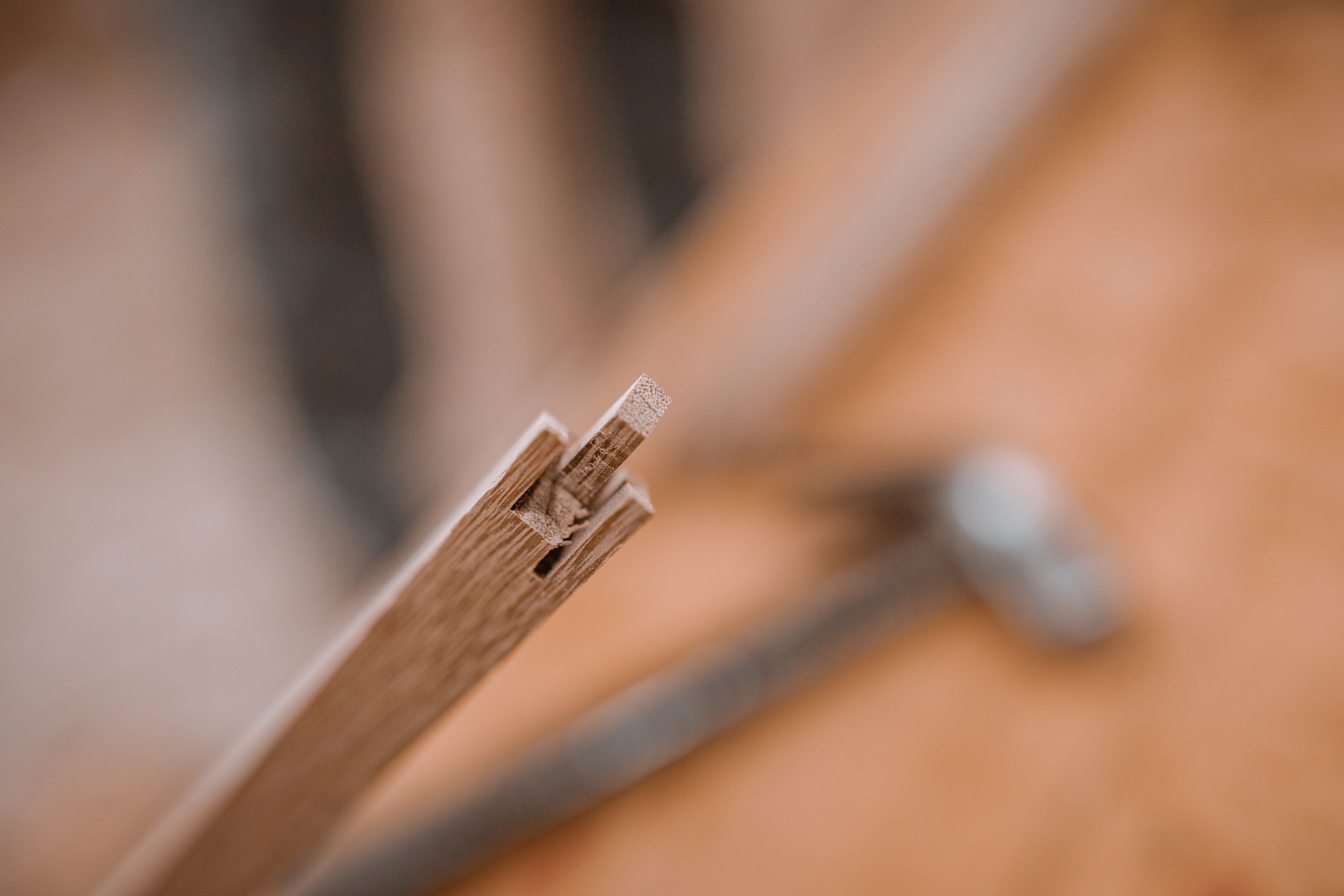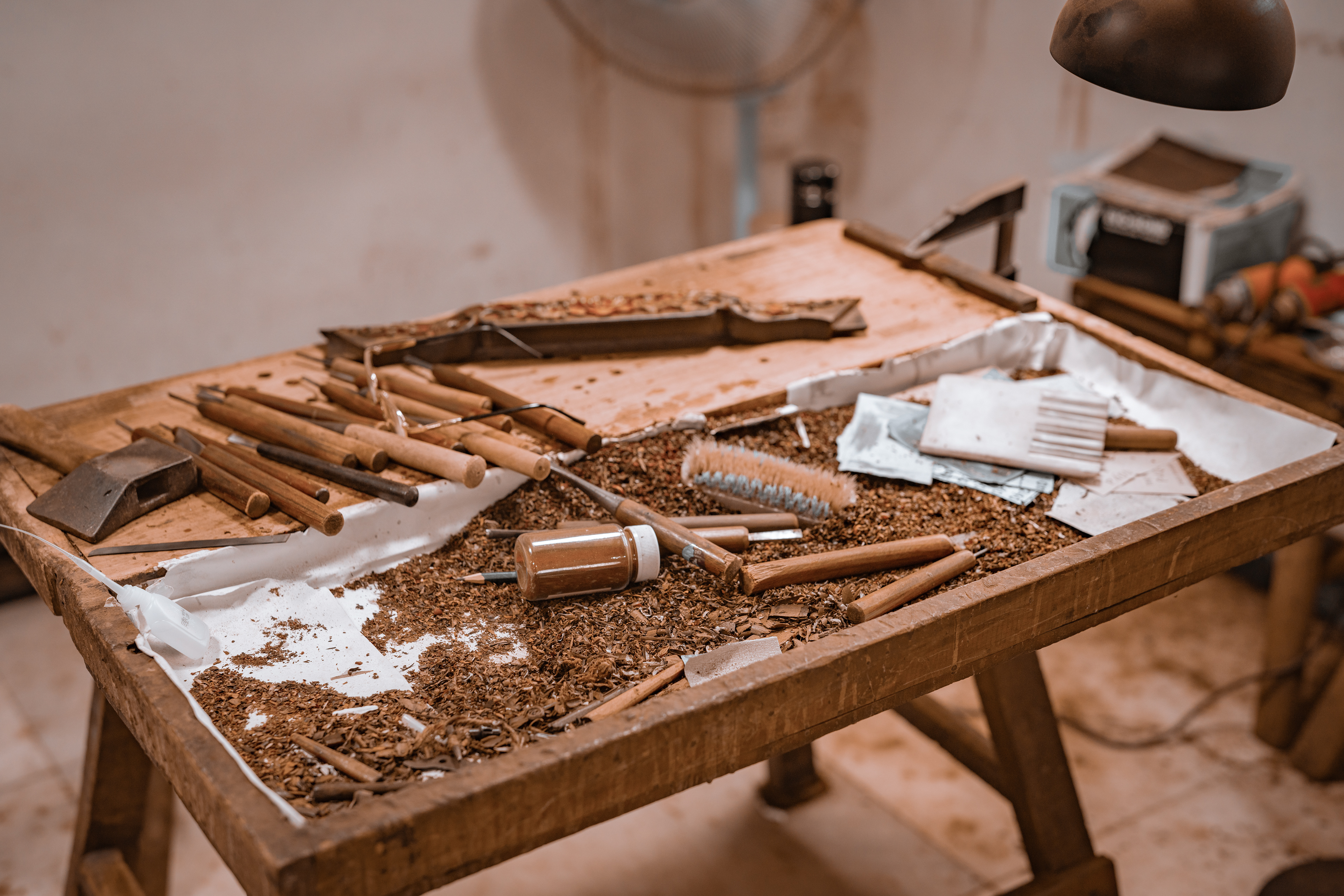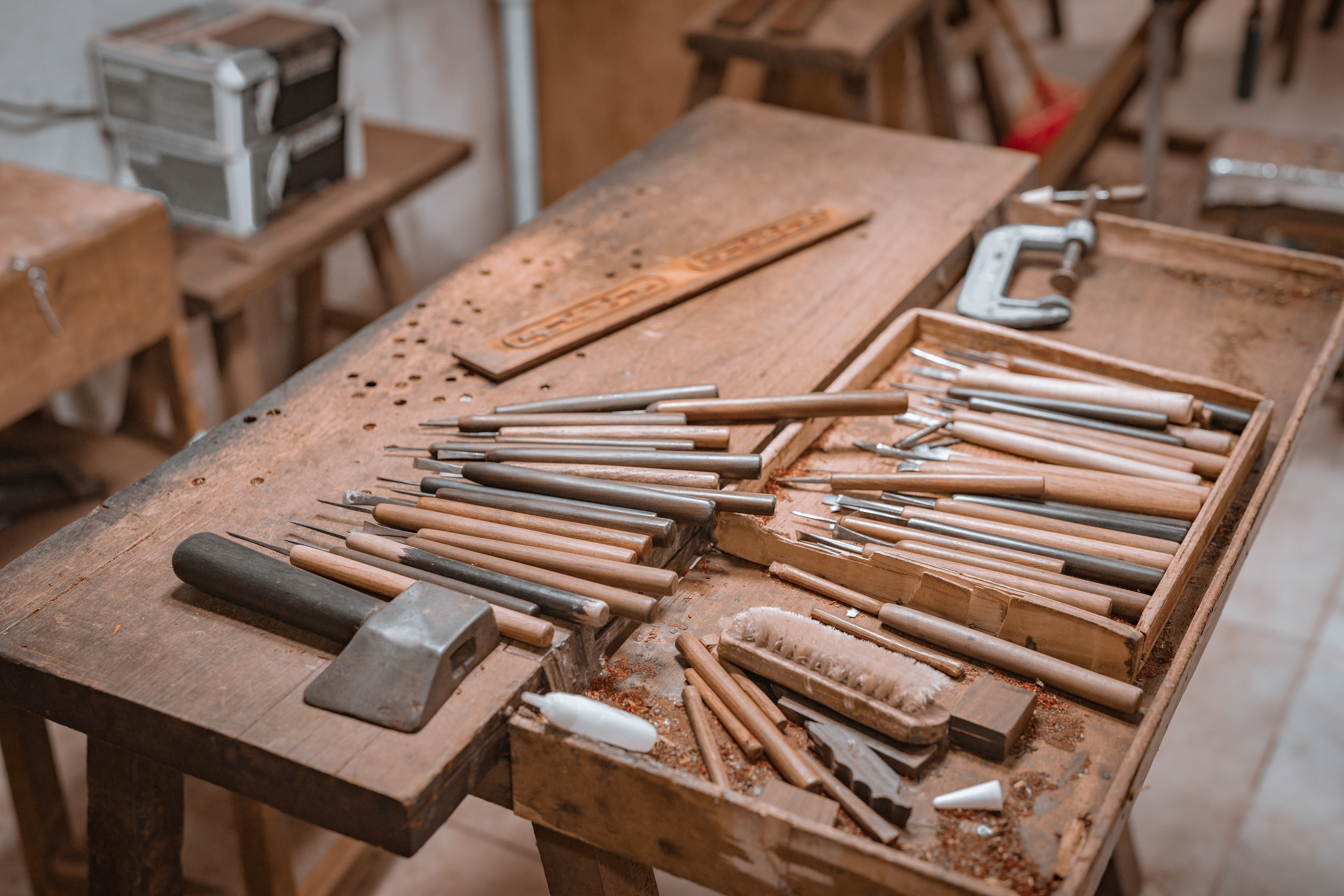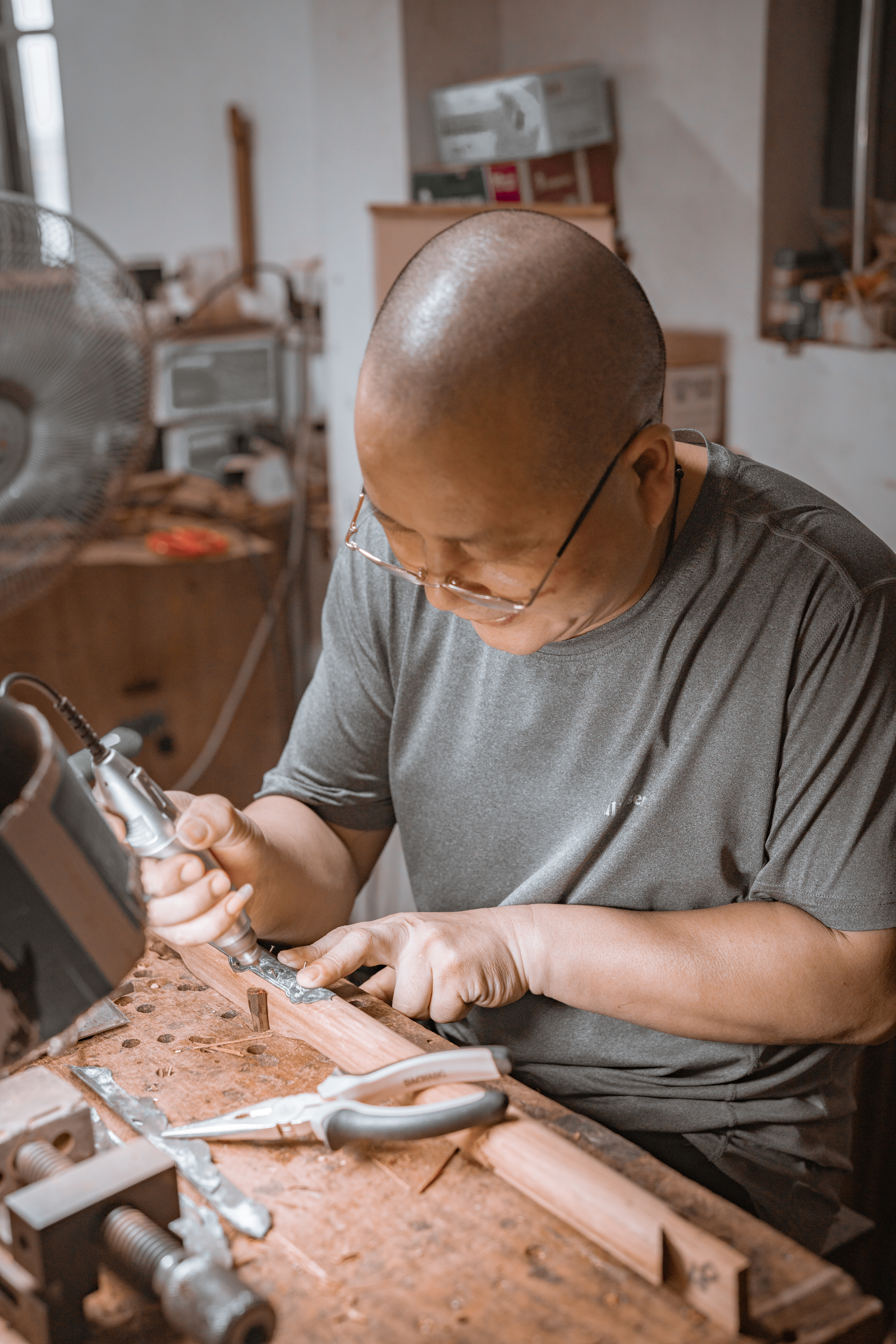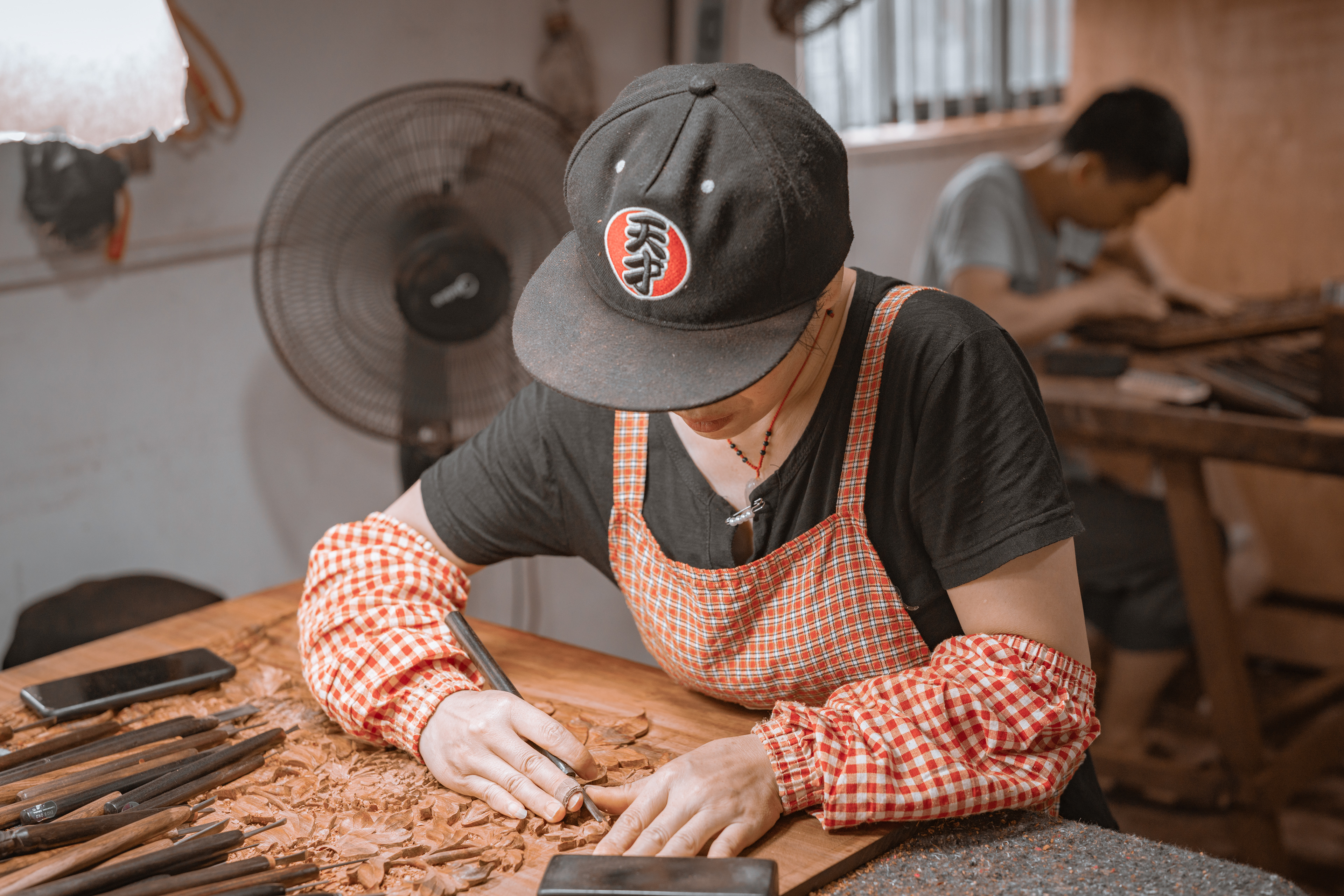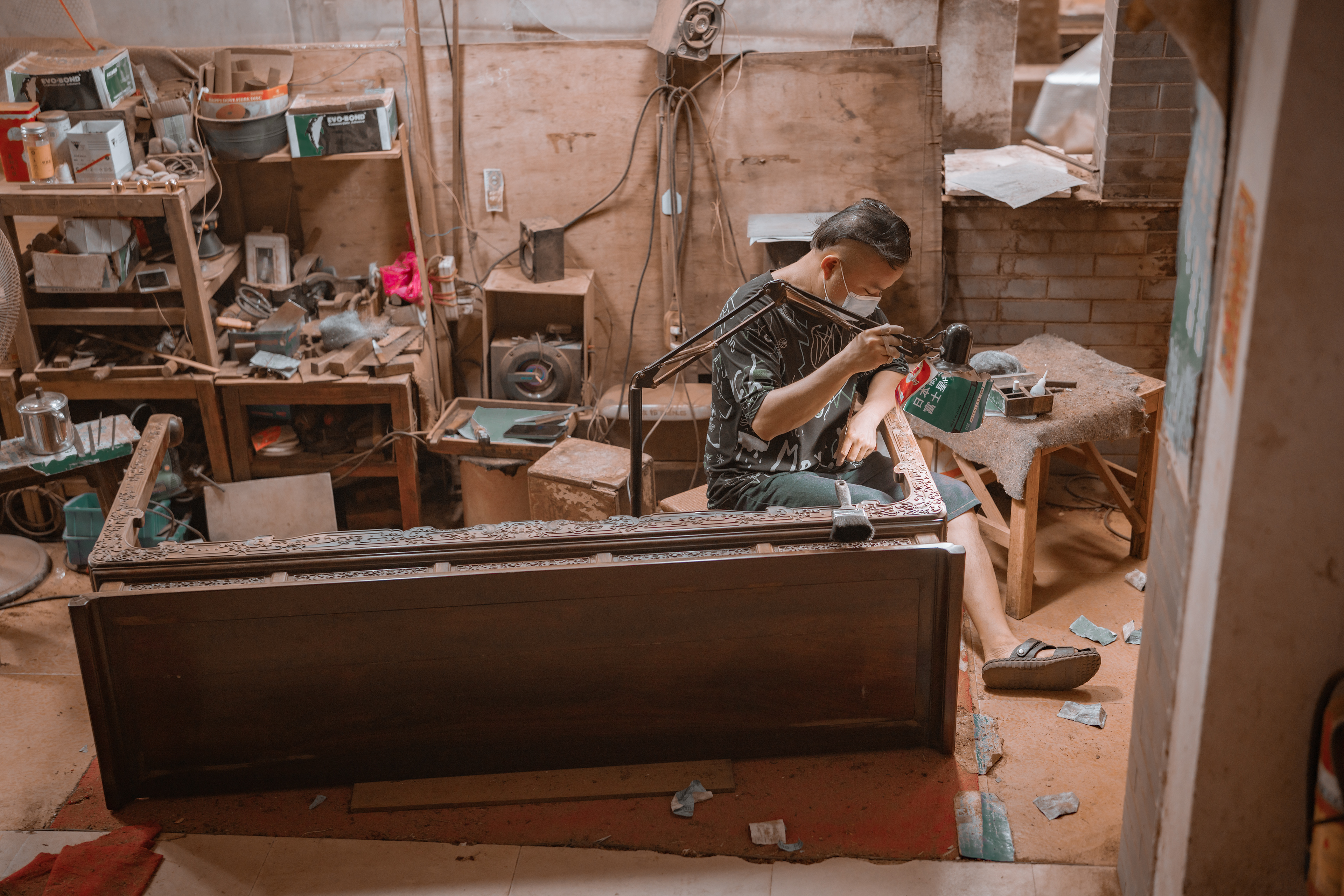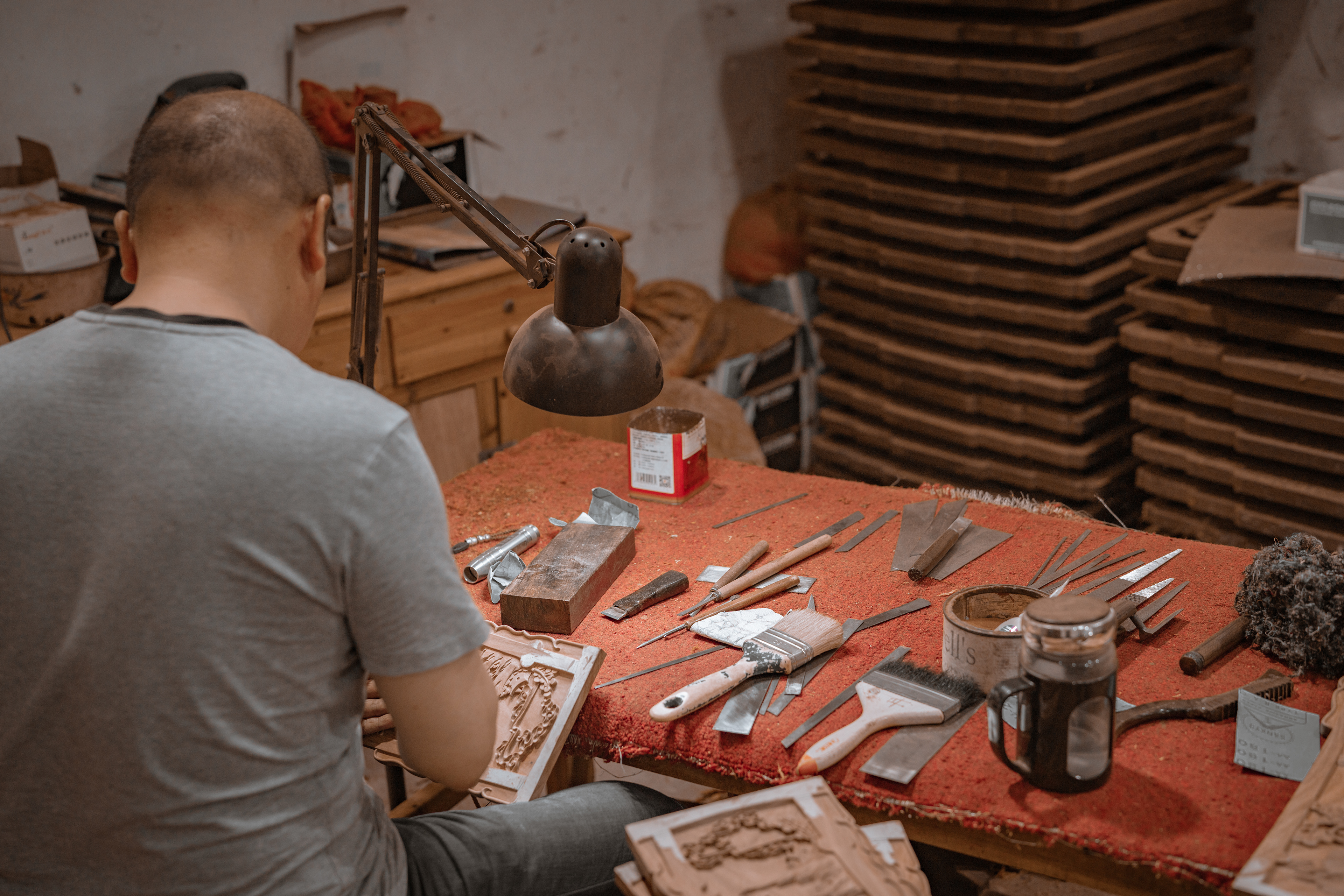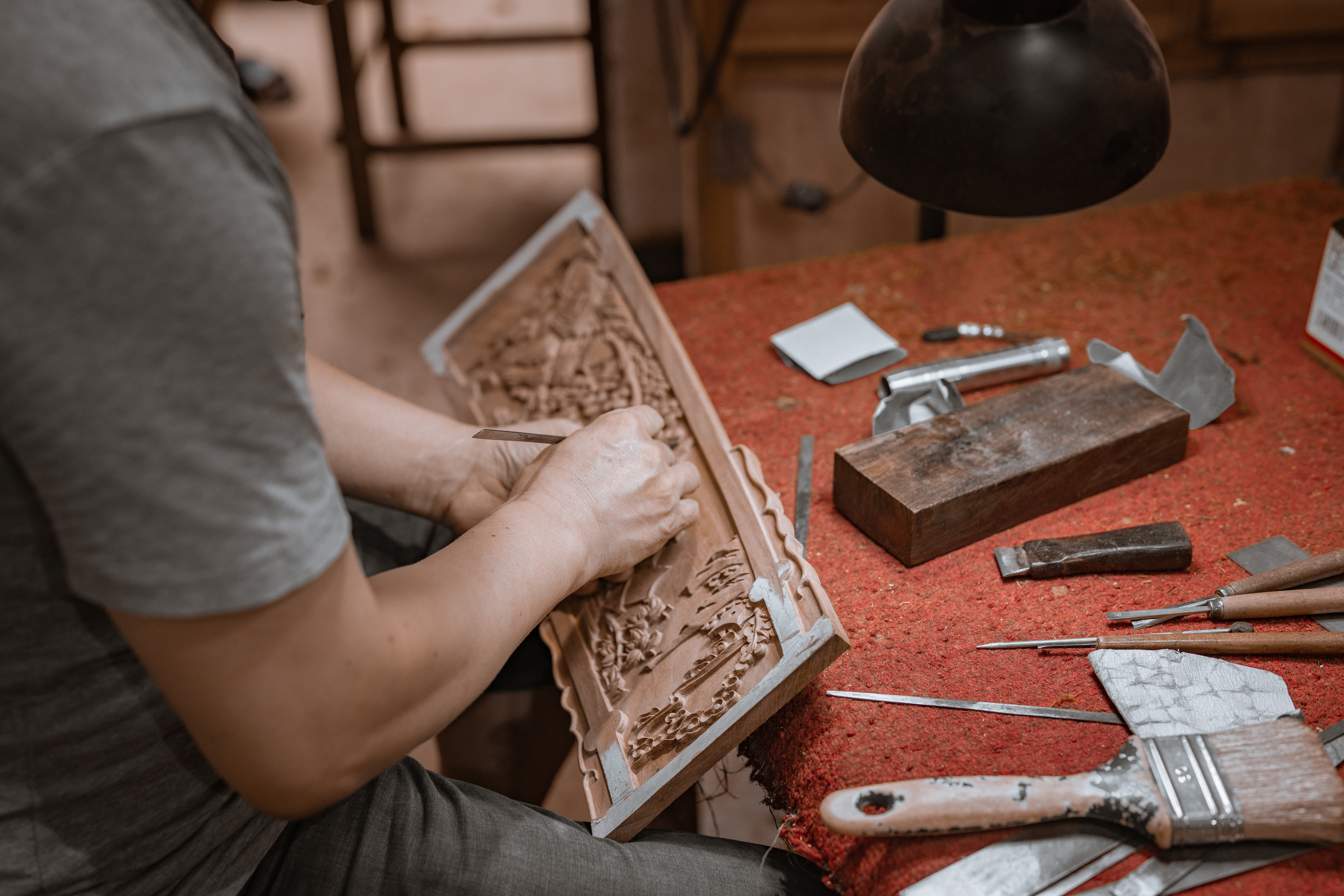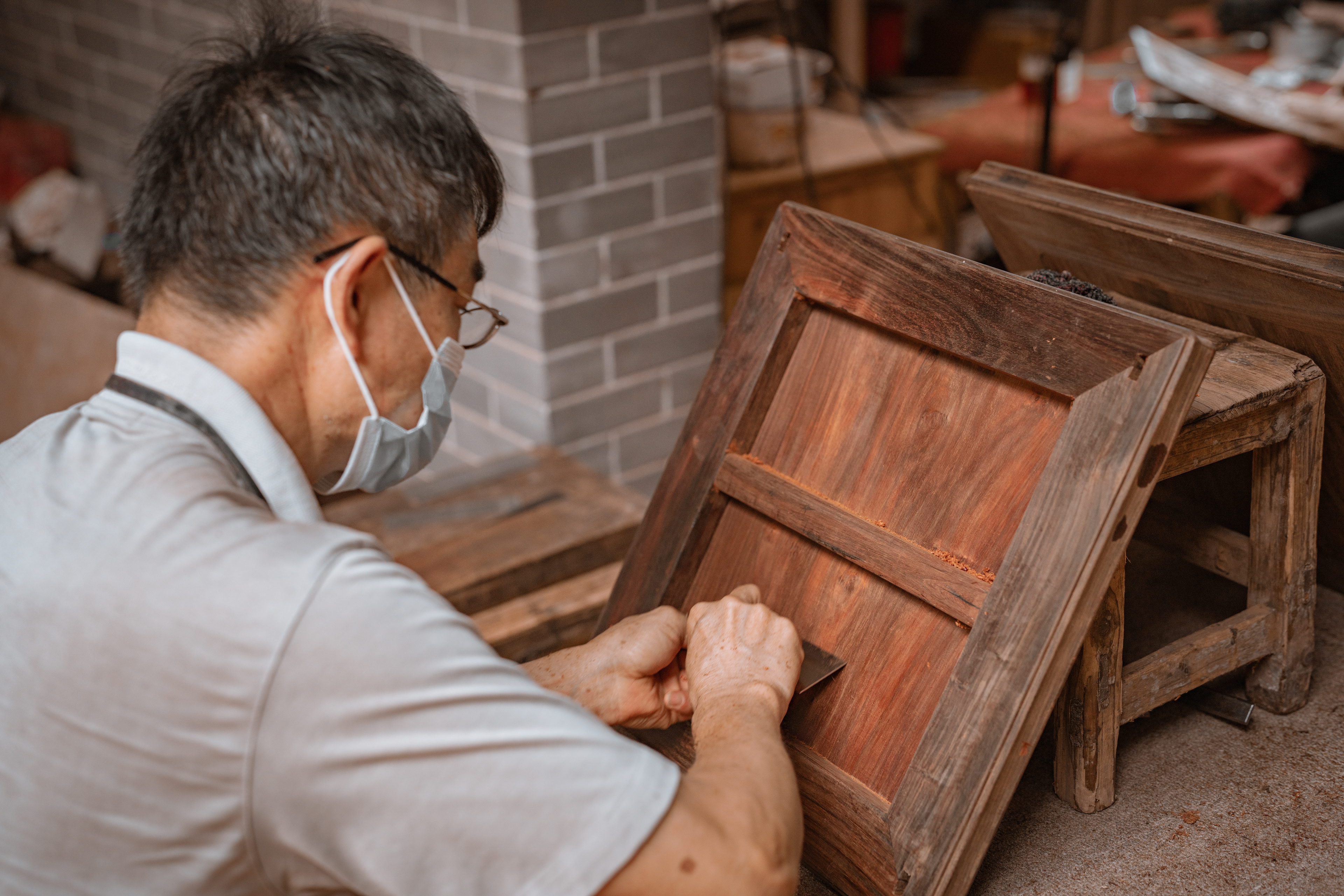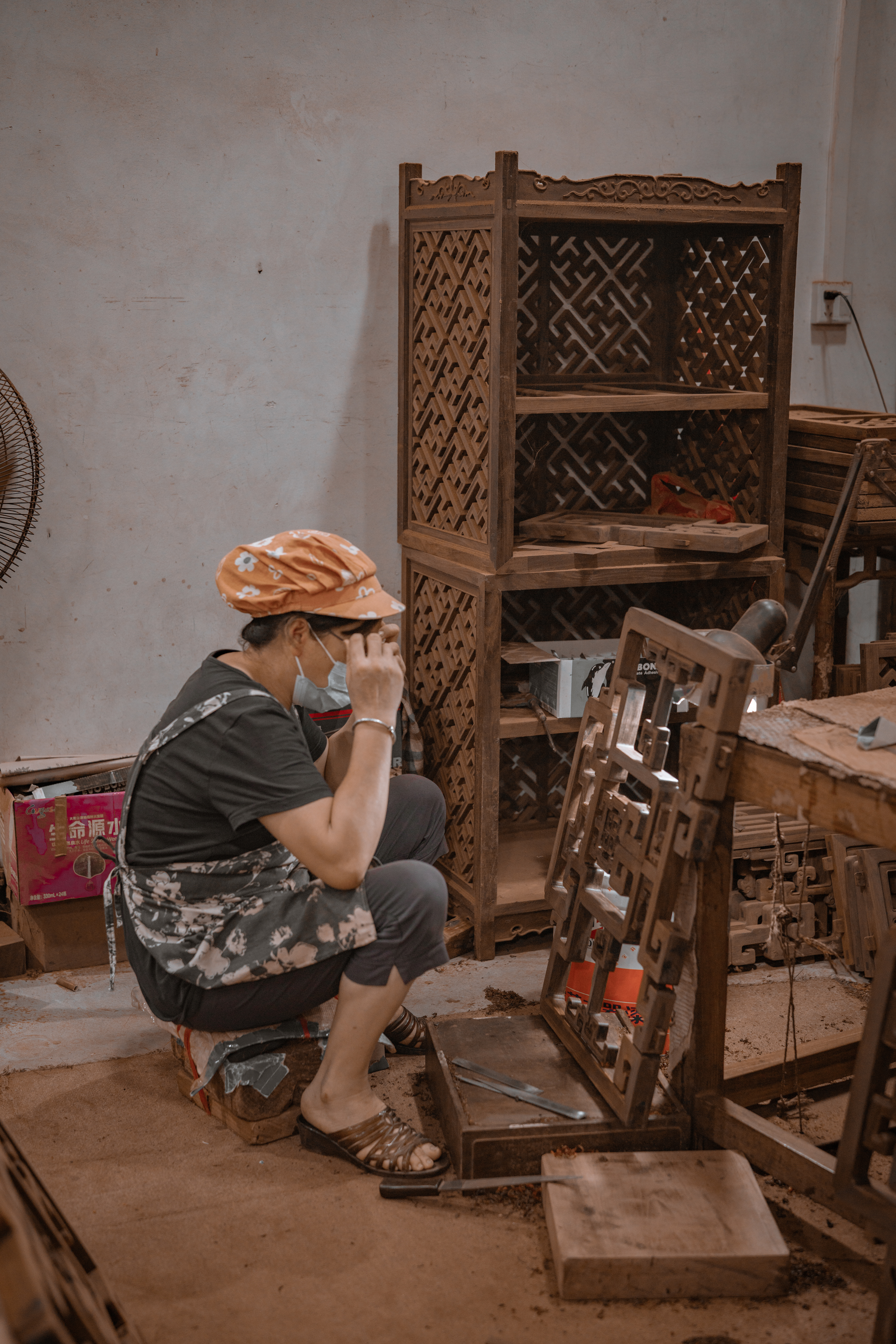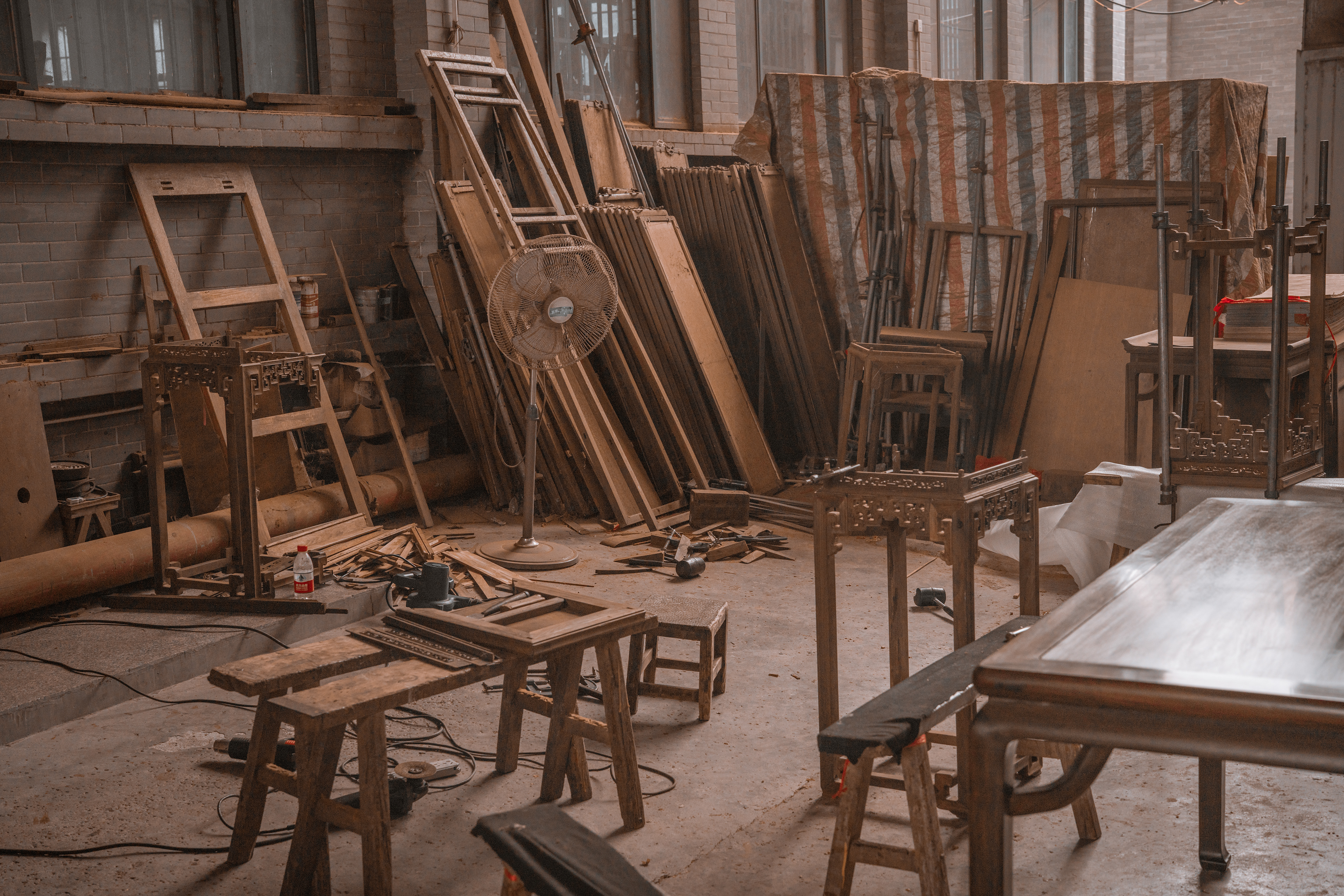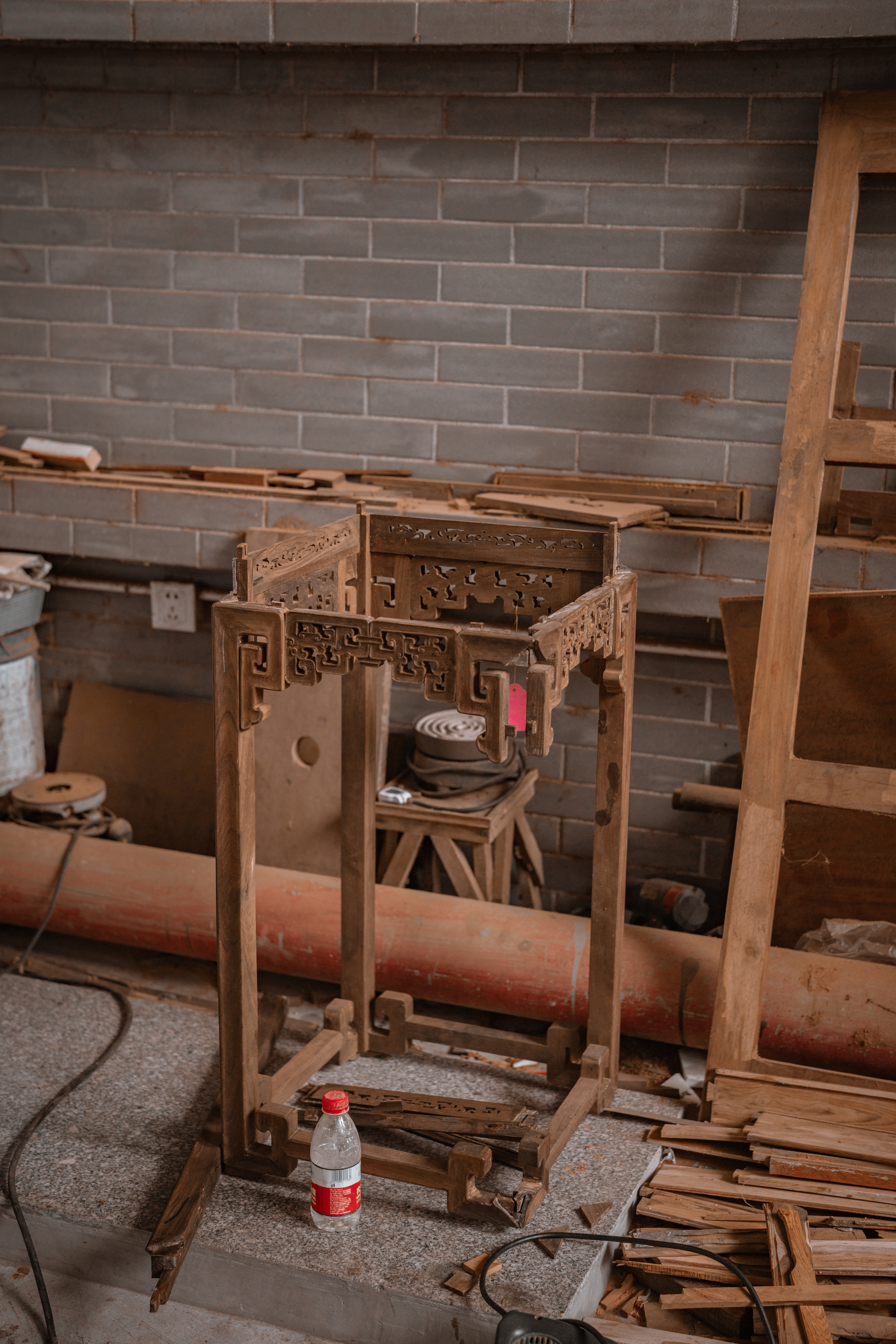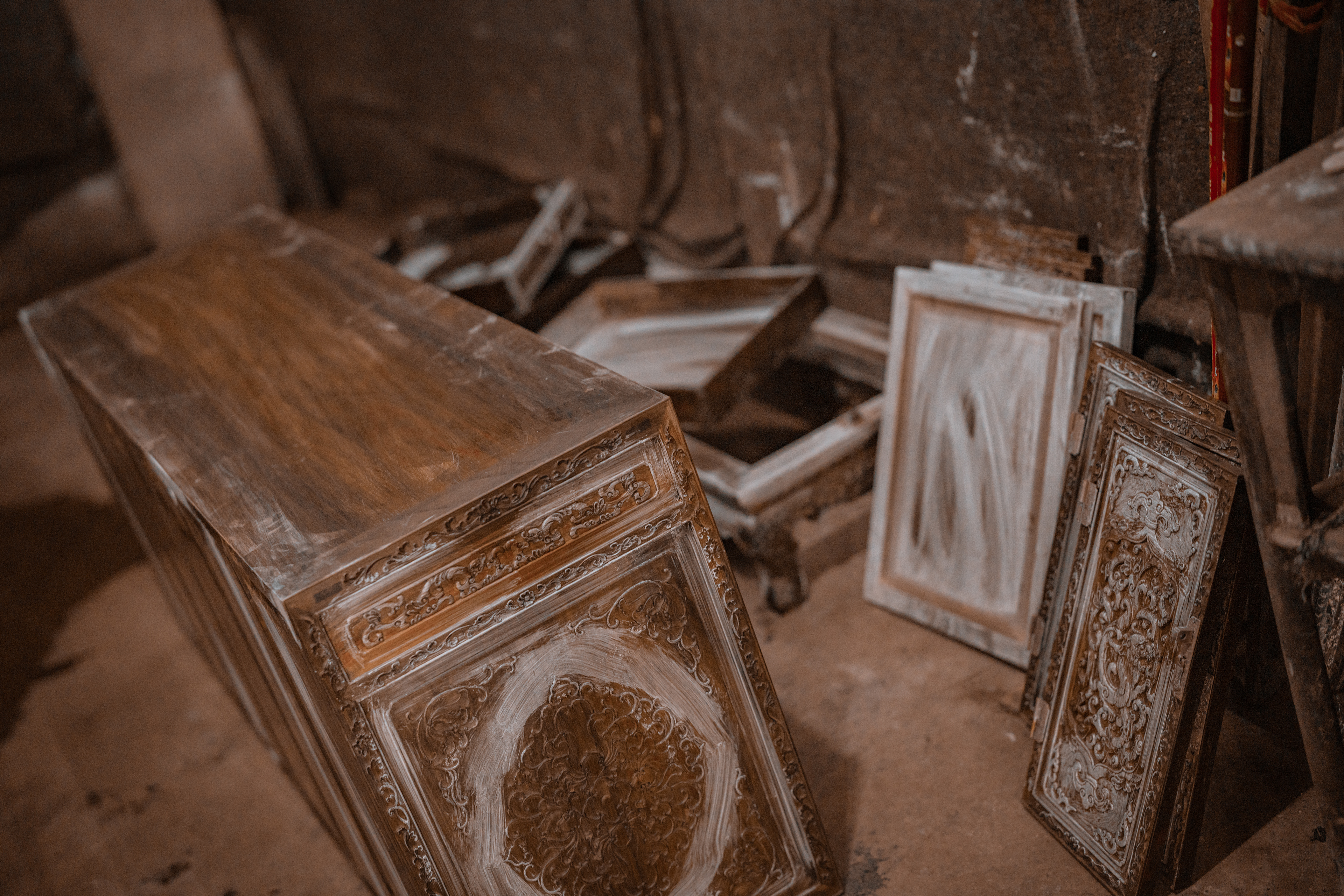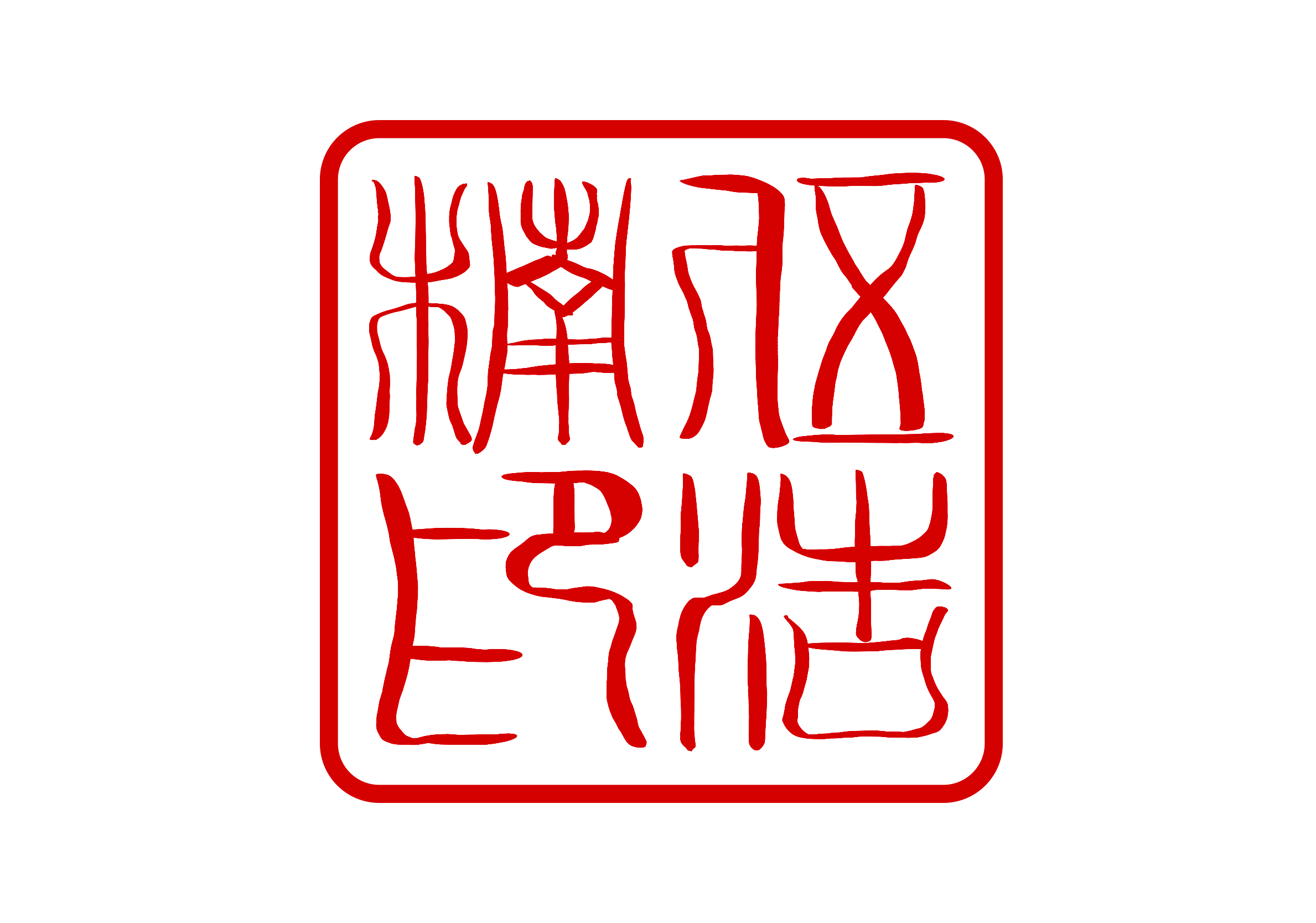By Ken Wu
What is wood carving? Is it merely just a craft, a reflection of history and culture? Or is it a culture, something distinct and representative of oneself? Or is it storytelling, combining culture and craftsmanship into meaning?
Walking into the craftsman space, there was a sweet smell of rosewood in the air. Hammering. Sawing. Grinding. People were working, or I should say immersed, in the art between their hands. Not an eye wandered across the room. There was only focus, concentration, and the experience of wood. I wondered, what could this craft mean to them.
“To me, woodcarving is a way of life, a passion of mine. It’s not something that I do for a living, but rather it’s something I experience to understand wood,” said Mr. Huan, a wood craftsman specializing in sanding with over thirty years of experience.
So, woodcarving becomes an experience?
“Woodcarving is creating stories. It’s allowing the human soul and vigor to come into being,” said Mr. Li, who is a wood craftsman with thirty years experience working on bas-relief carving.
So, woodcarving becomes an extension of the soul?
“Woodcarving is an extension of human experience. It’s something that one places heart and time into. To feel wood is to understand wood. To carve wood is to put meaning to wood. To experience wood is to put meaning to yourself,” said Mr. Jin, a third-generation wood craftsman who’s carved for 45 years.
So, woodcarving is experience and meaning?
What I saw was not a craft, a culture, nor storytelling. What I saw was sandpaper, a gouge, and a chisel, yet my interpretation of it changed.
Sand paper. It slides past wood, bringing out the true face of wood. It shows the colors of the tree’s life.
Gouge. It carves the wood, creating patterns mimicking the art of old. It’s the embodiment of the artist’s soul.
Chisel. It hammers down wood, creating connections between the artist and the wood. It sources the fusion of the artist and the tree.
Woodcraft Stories
